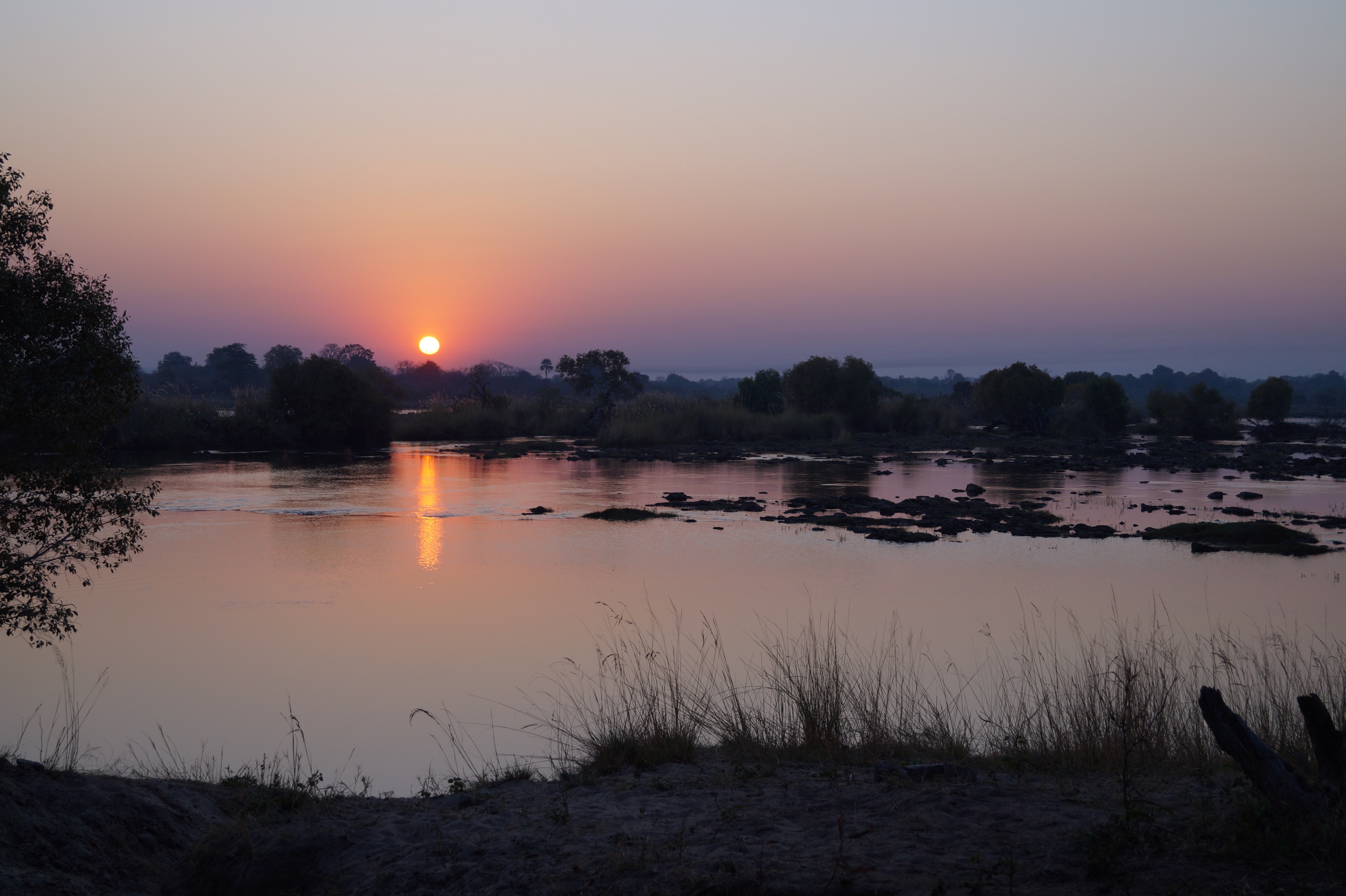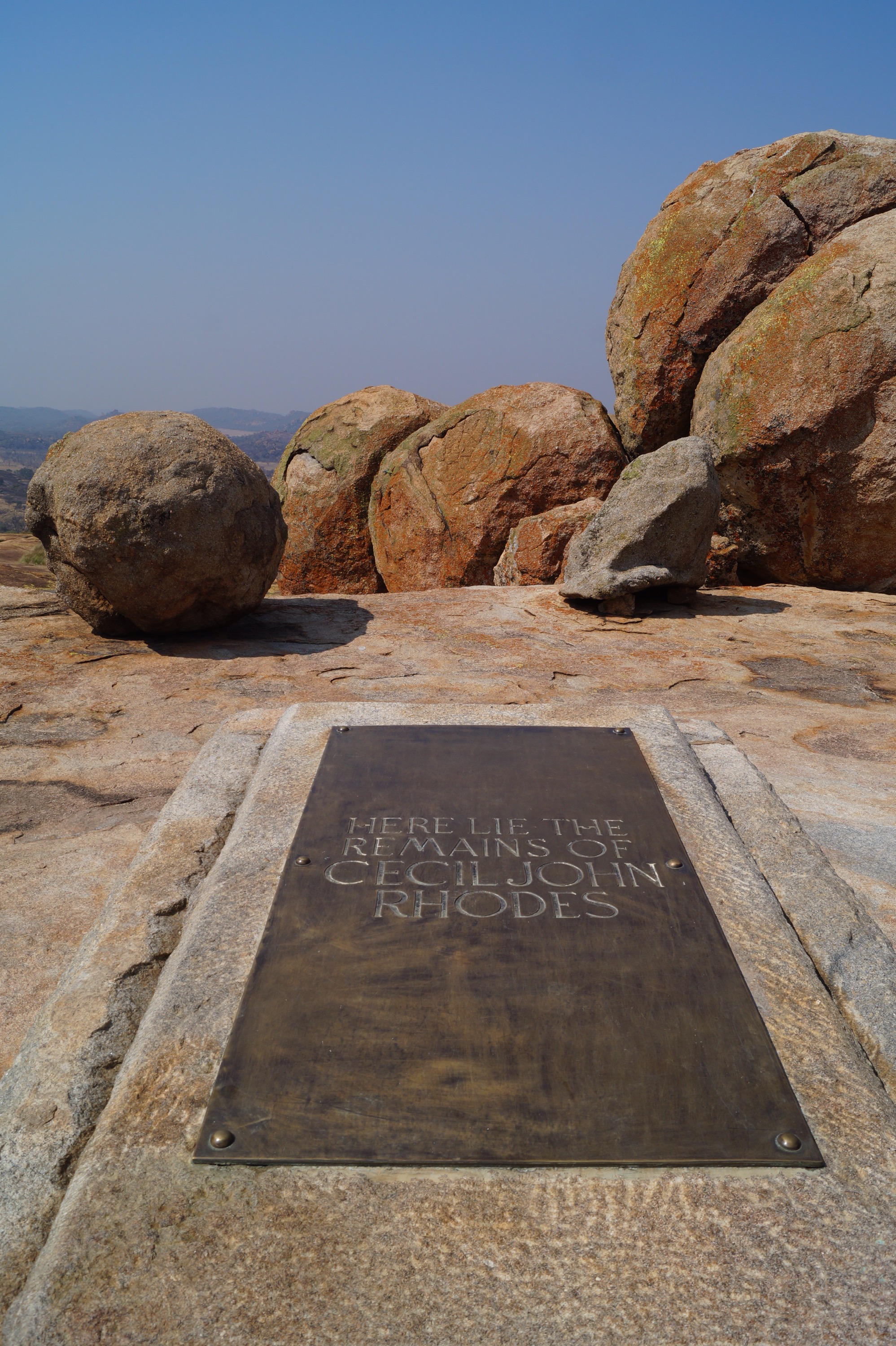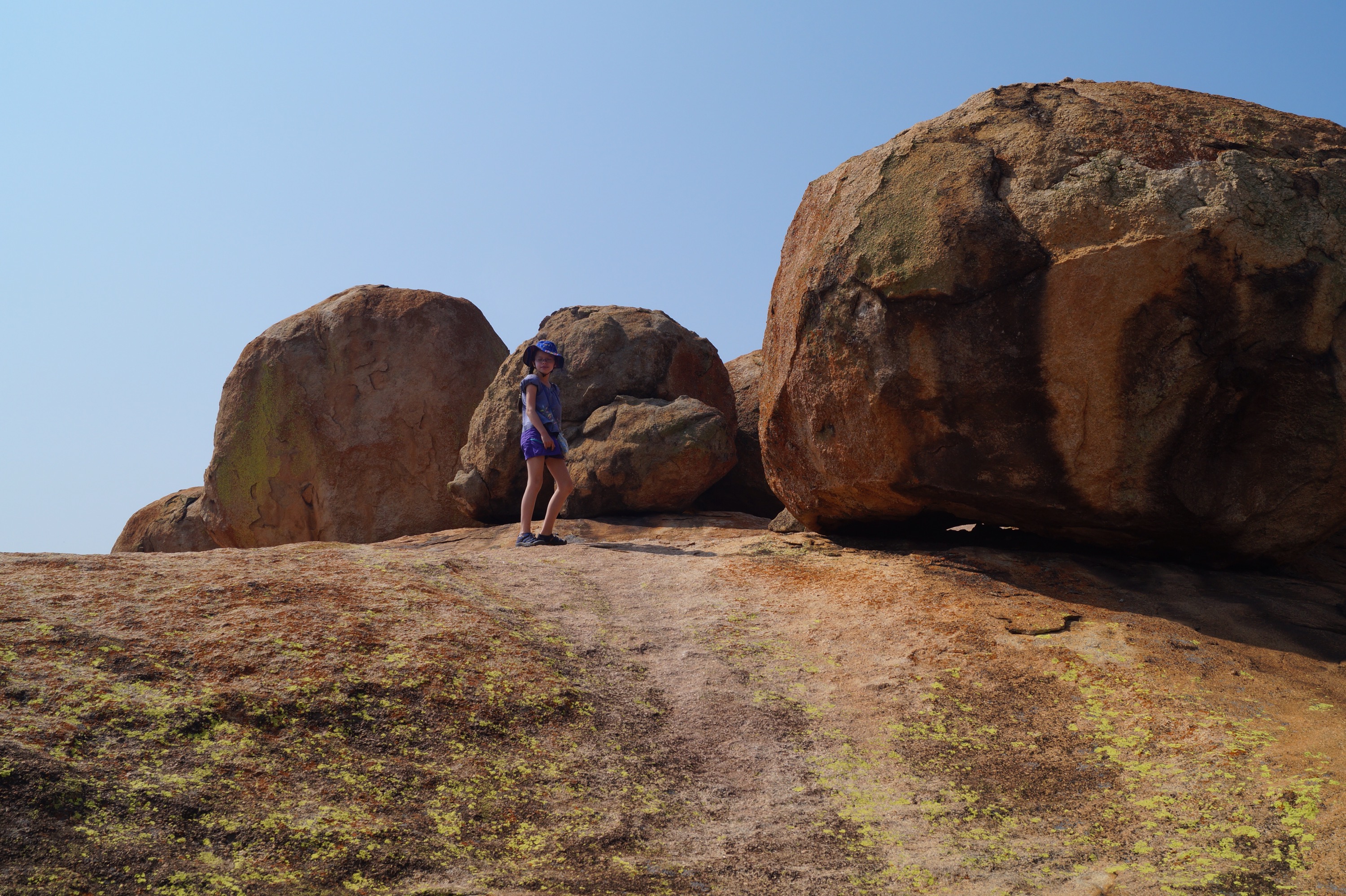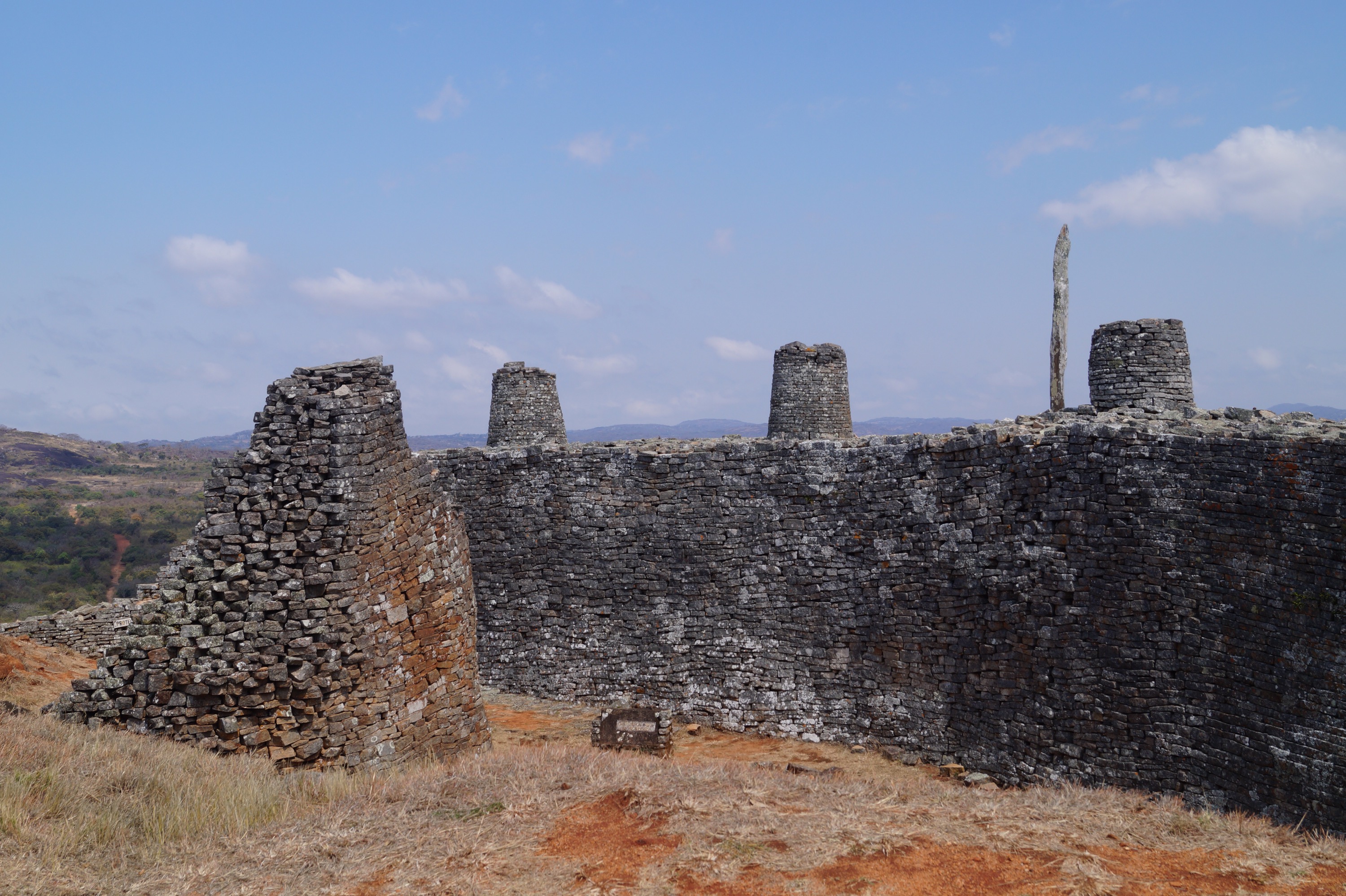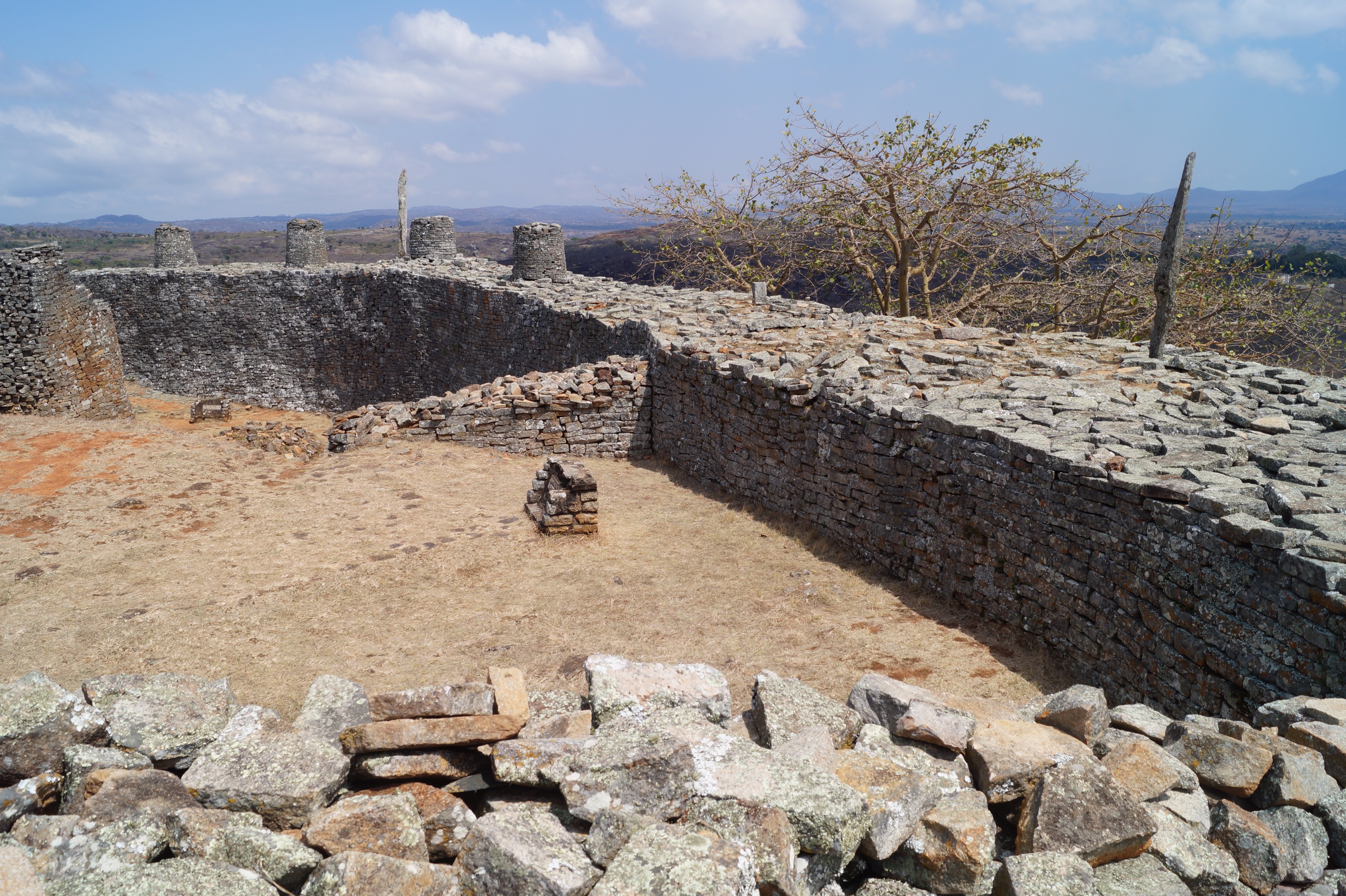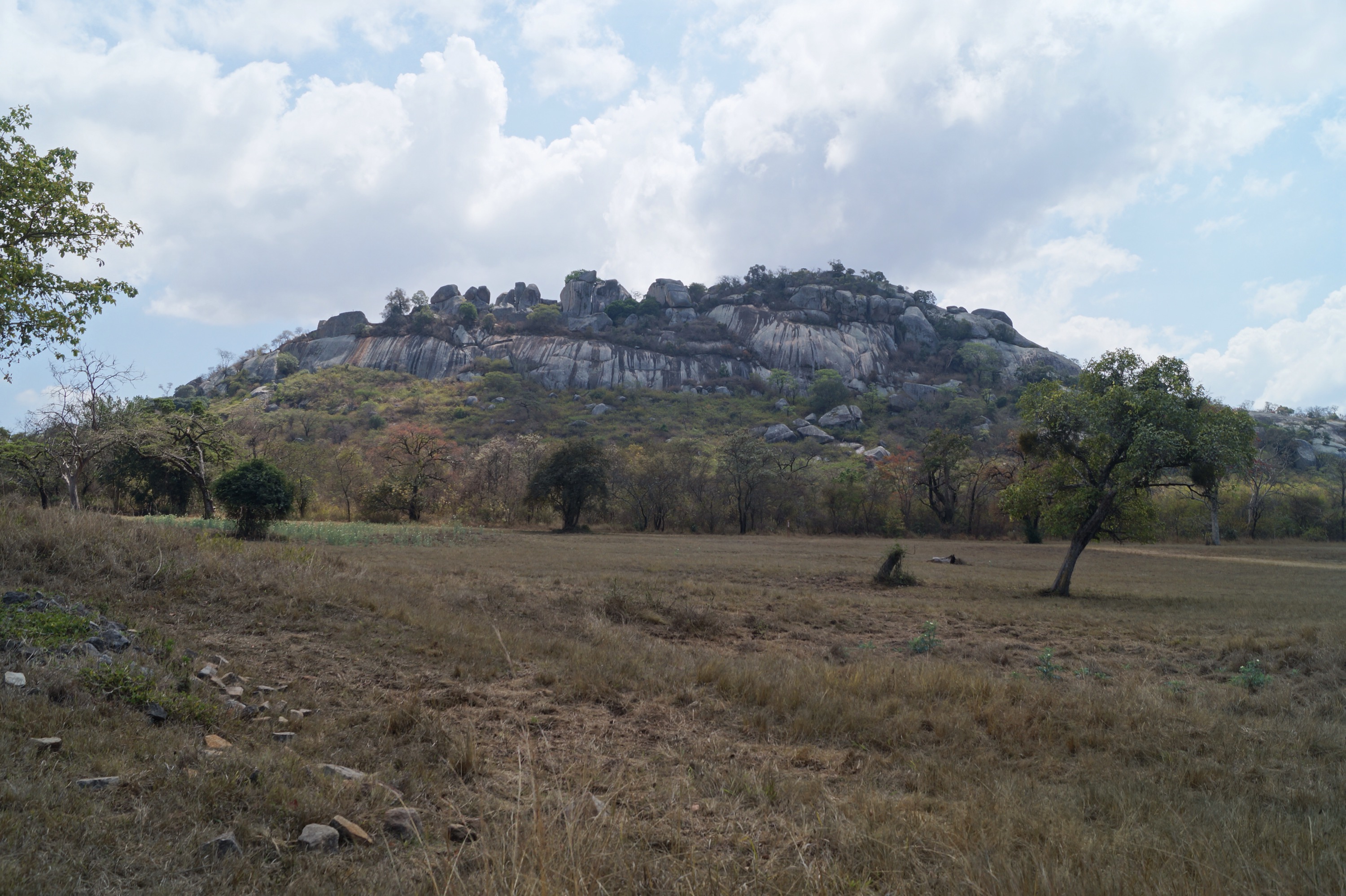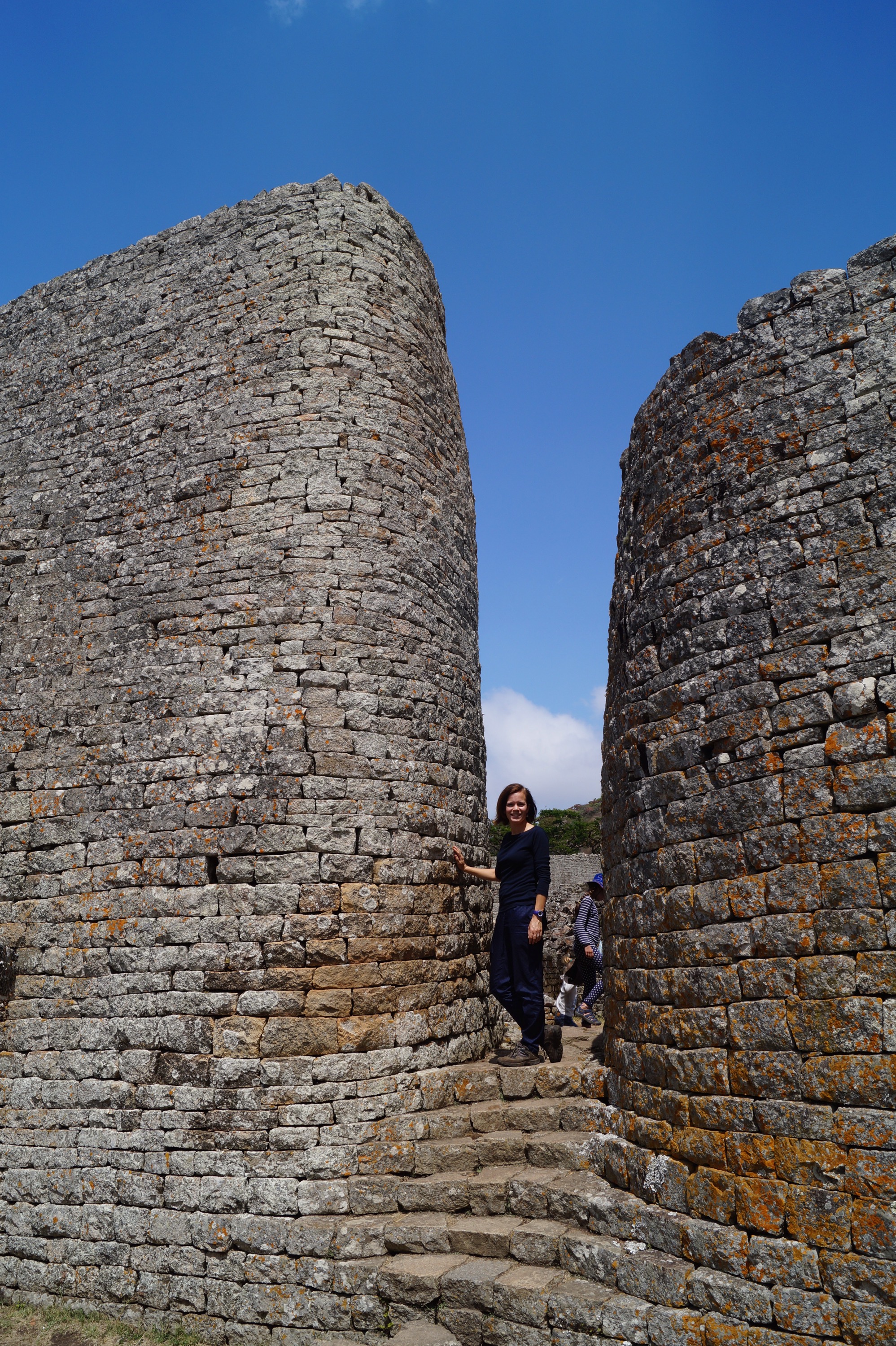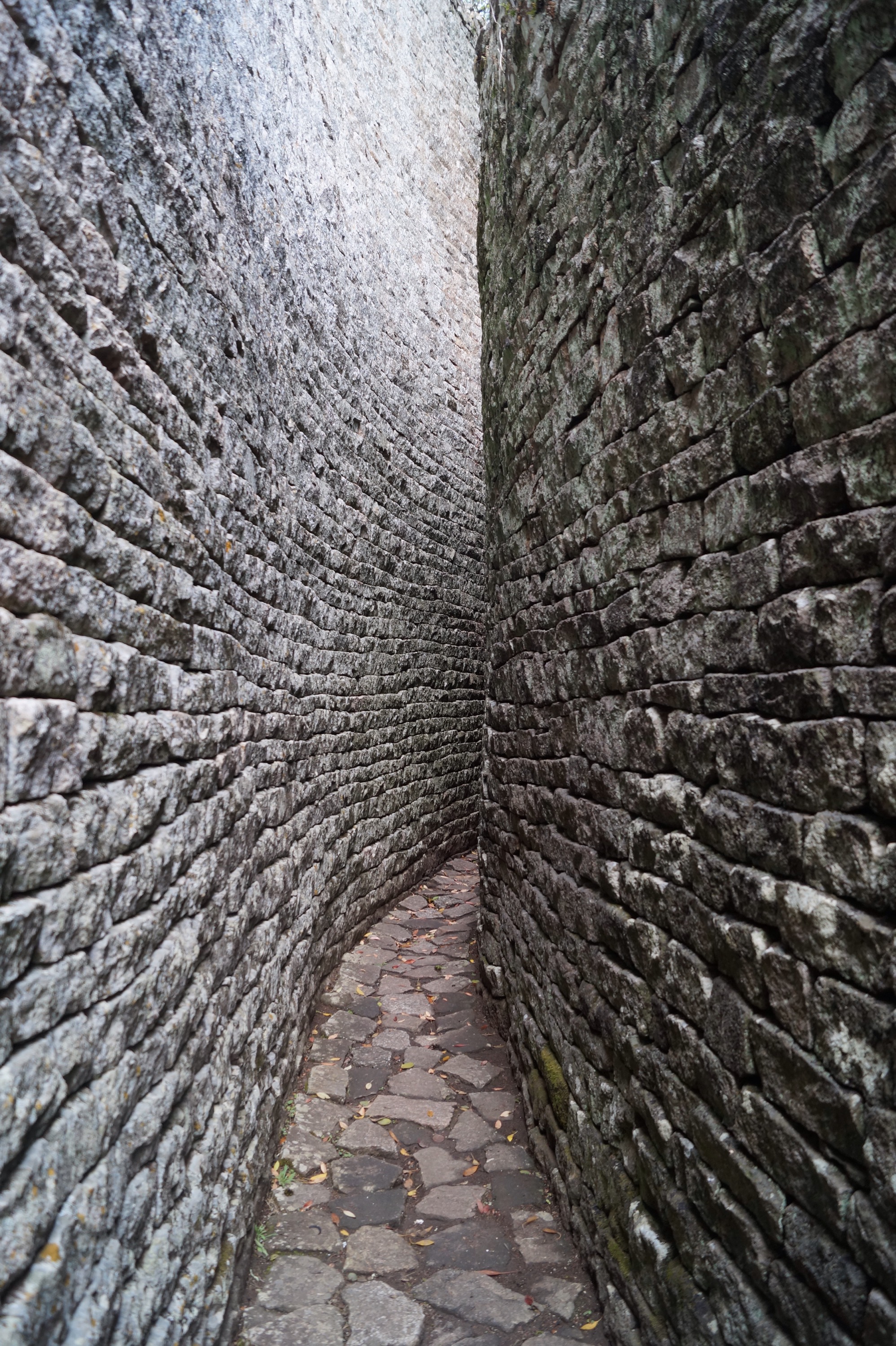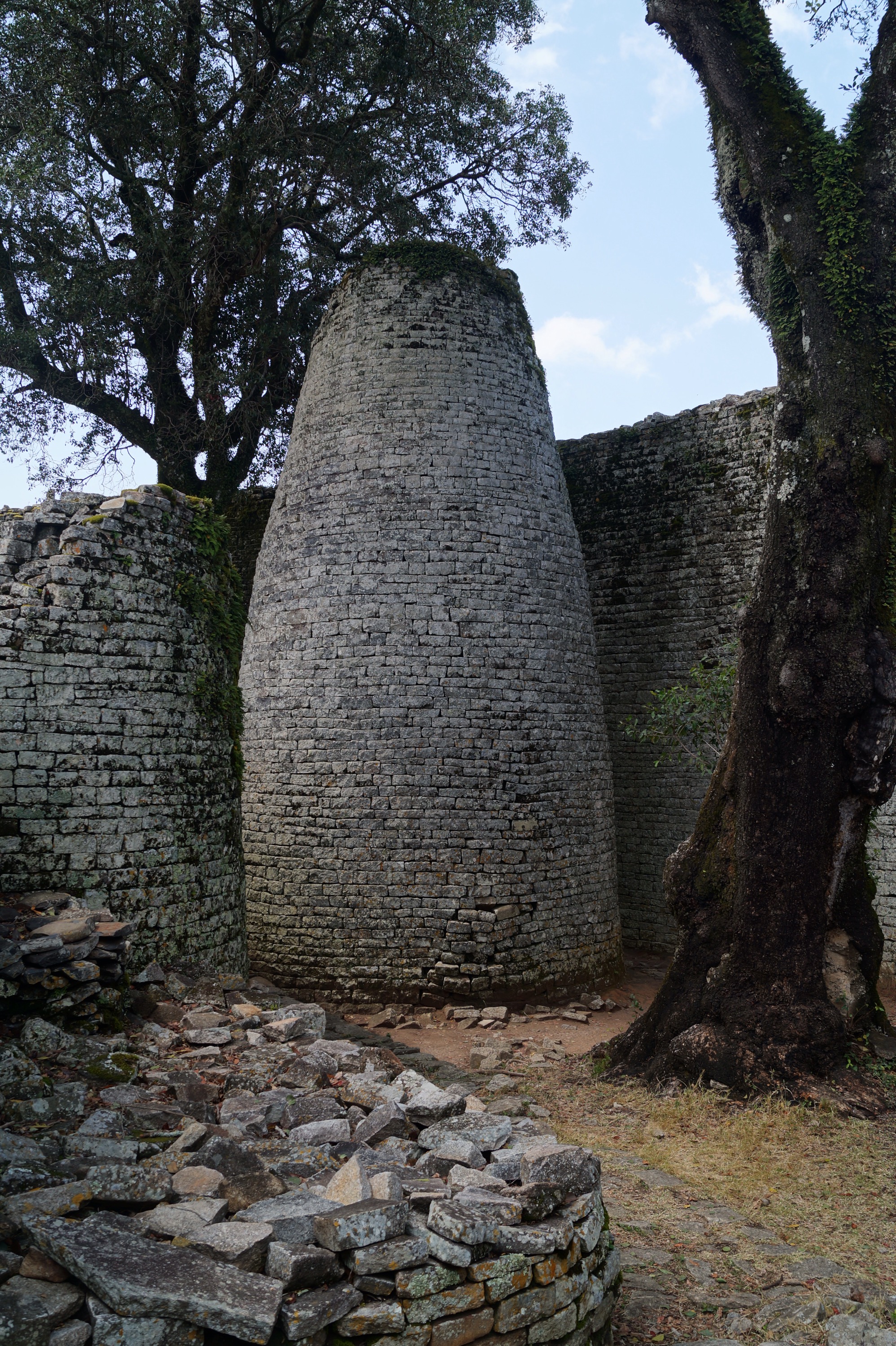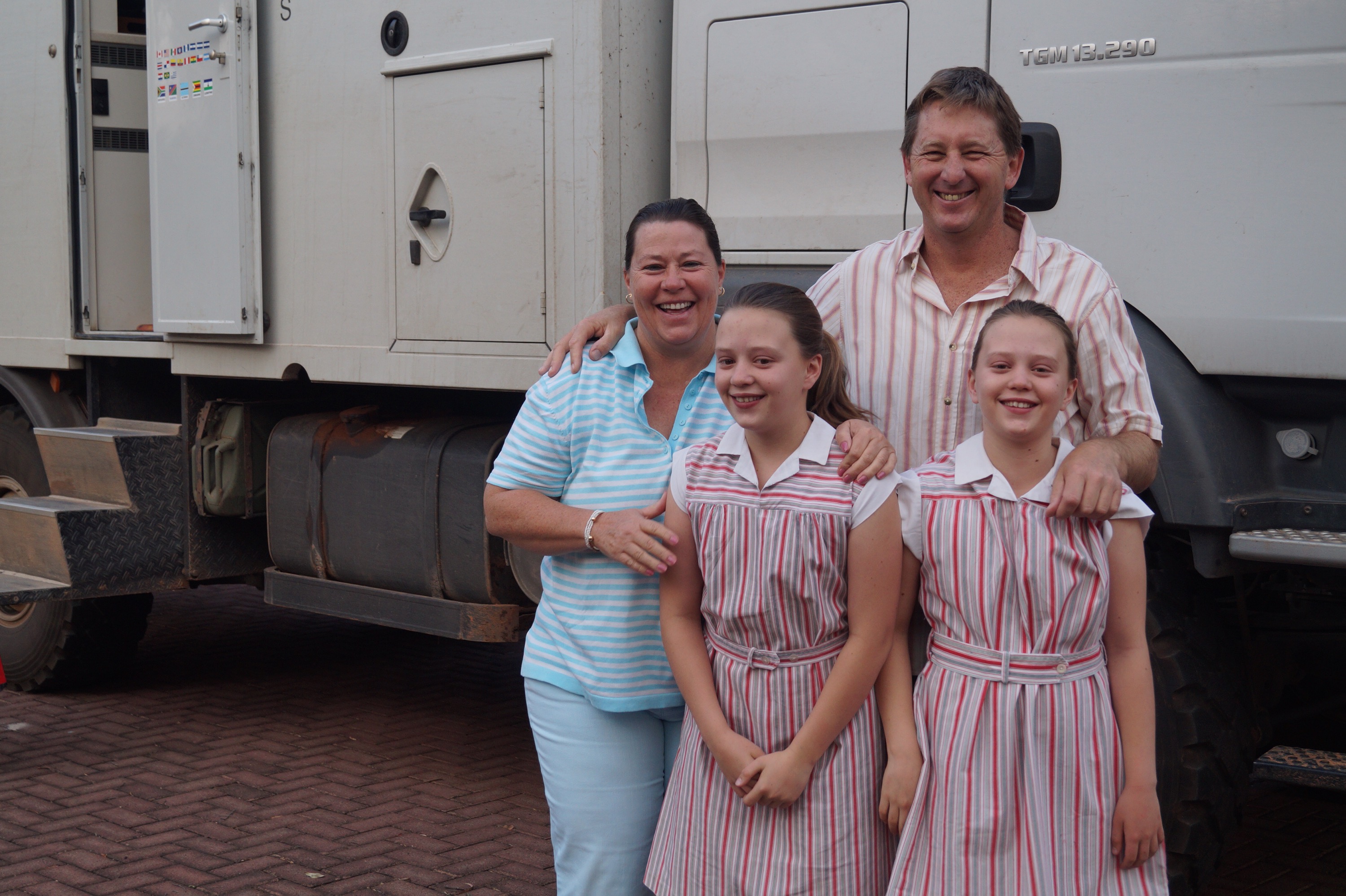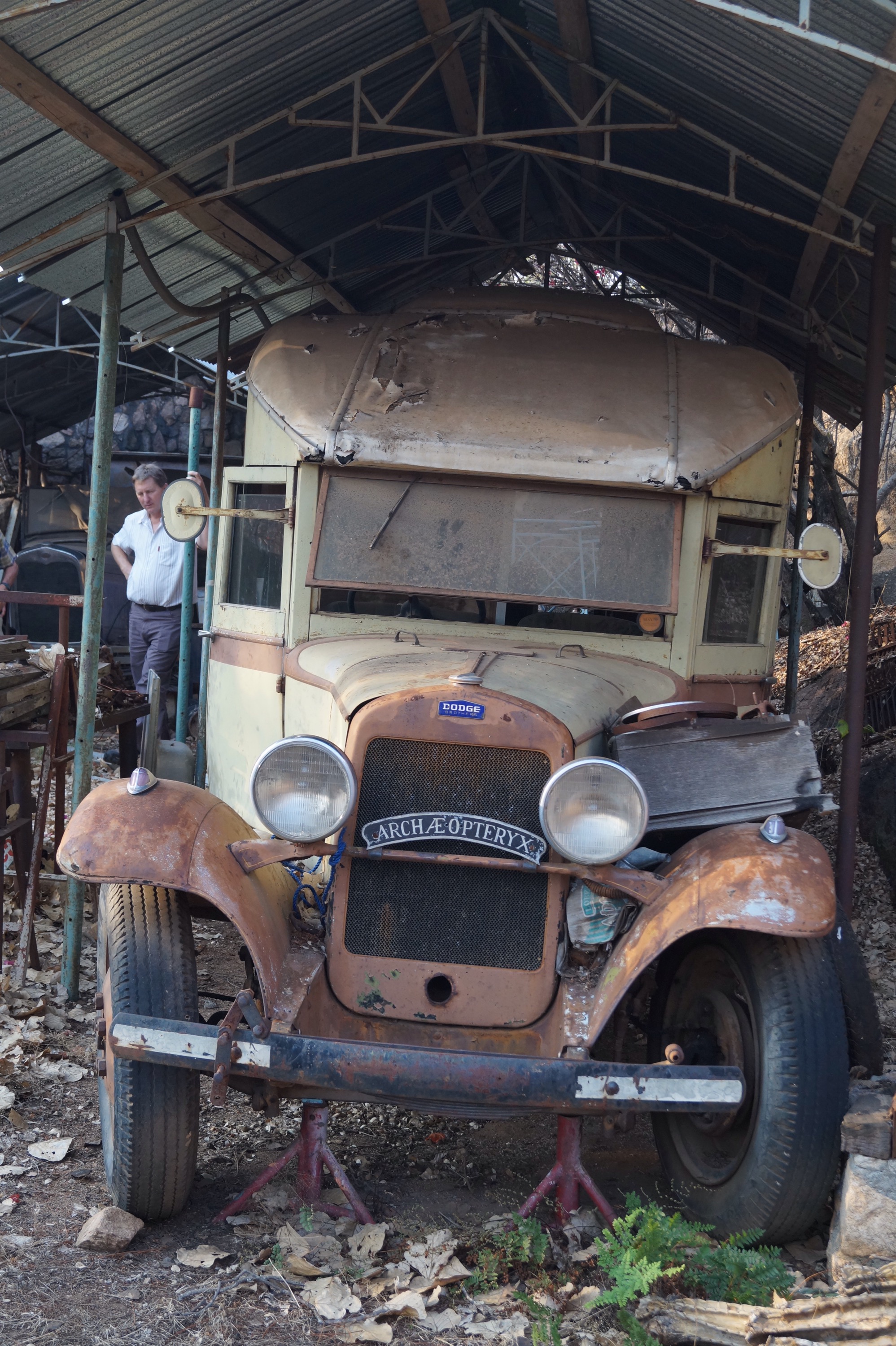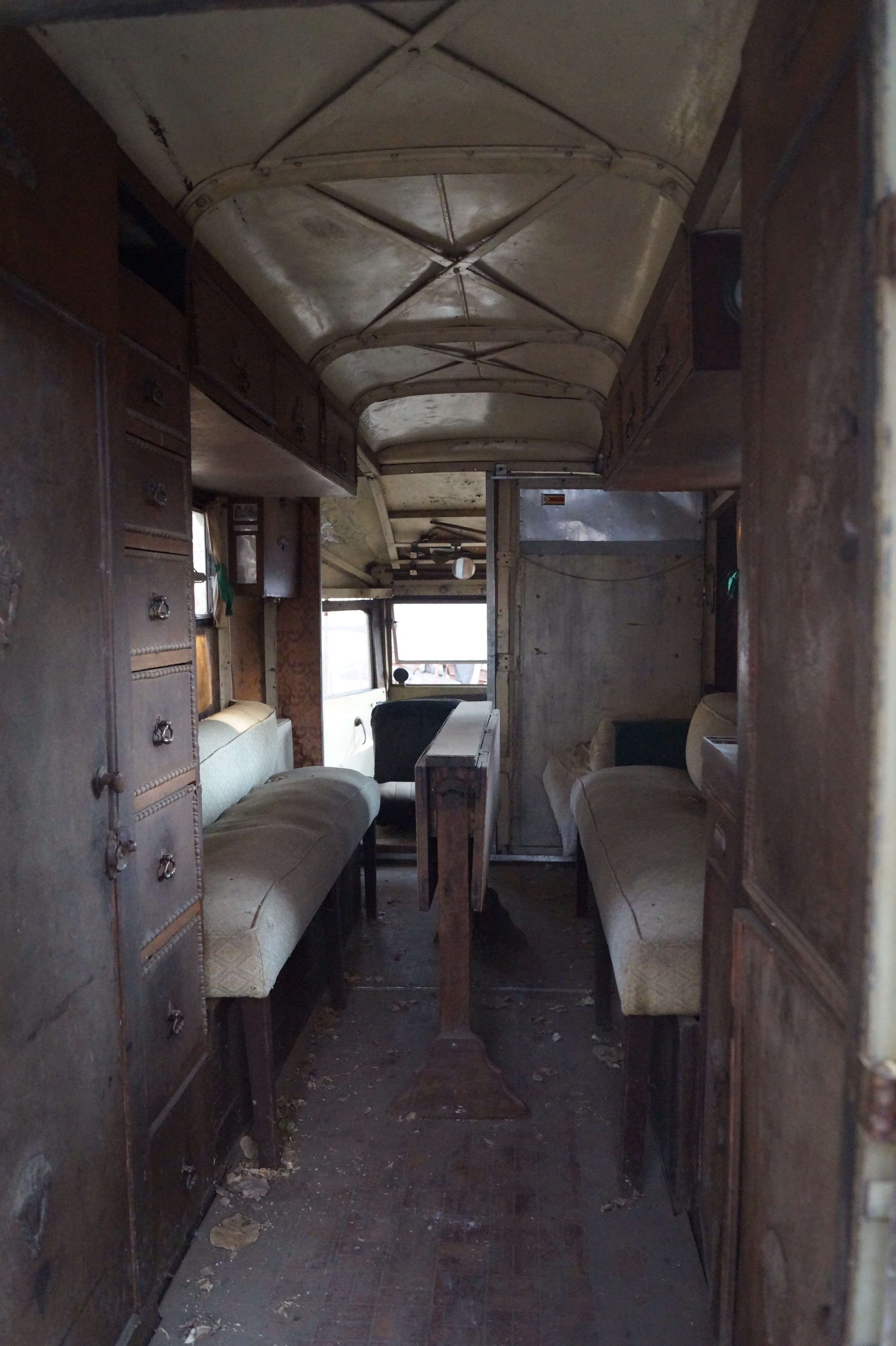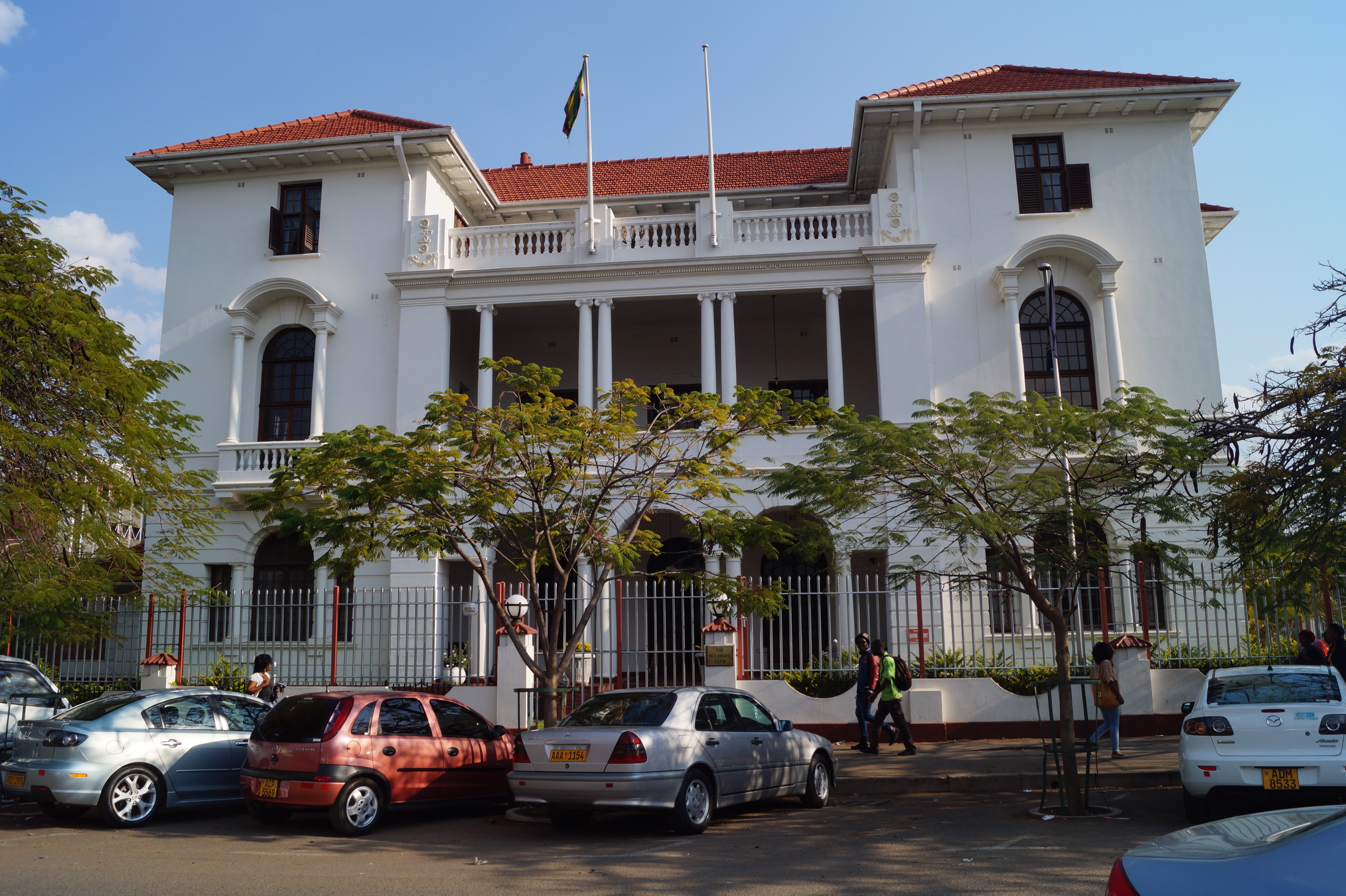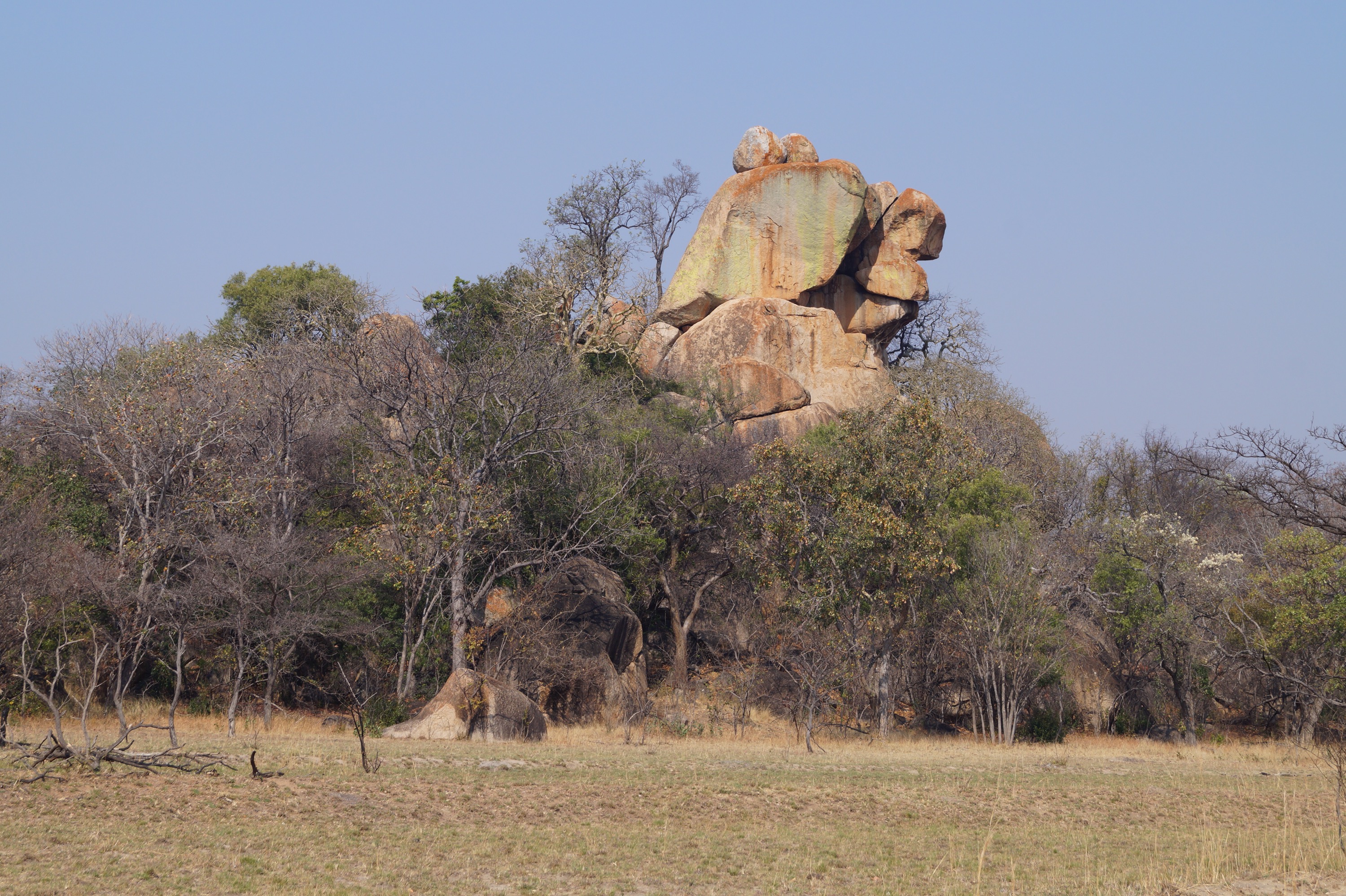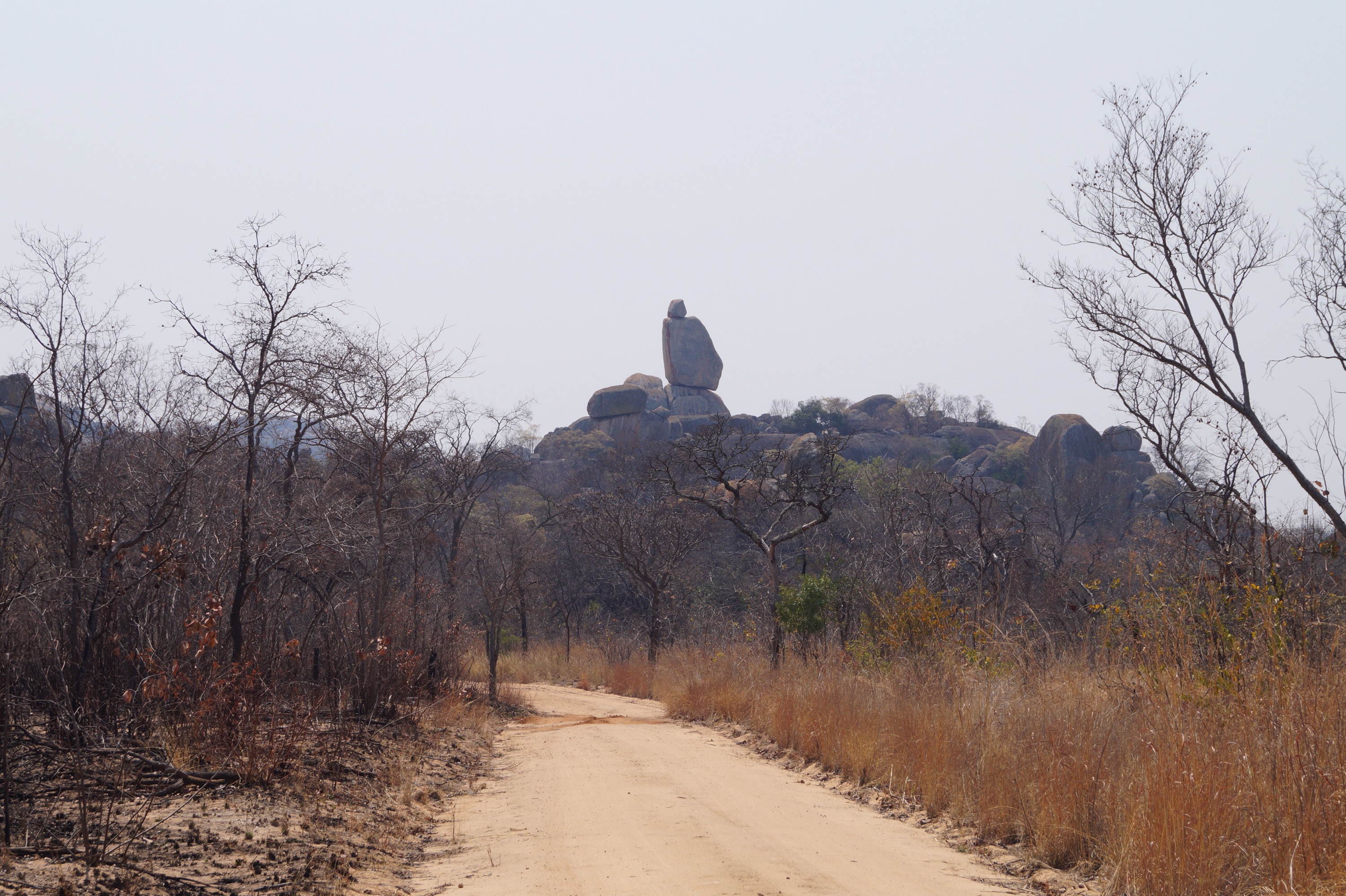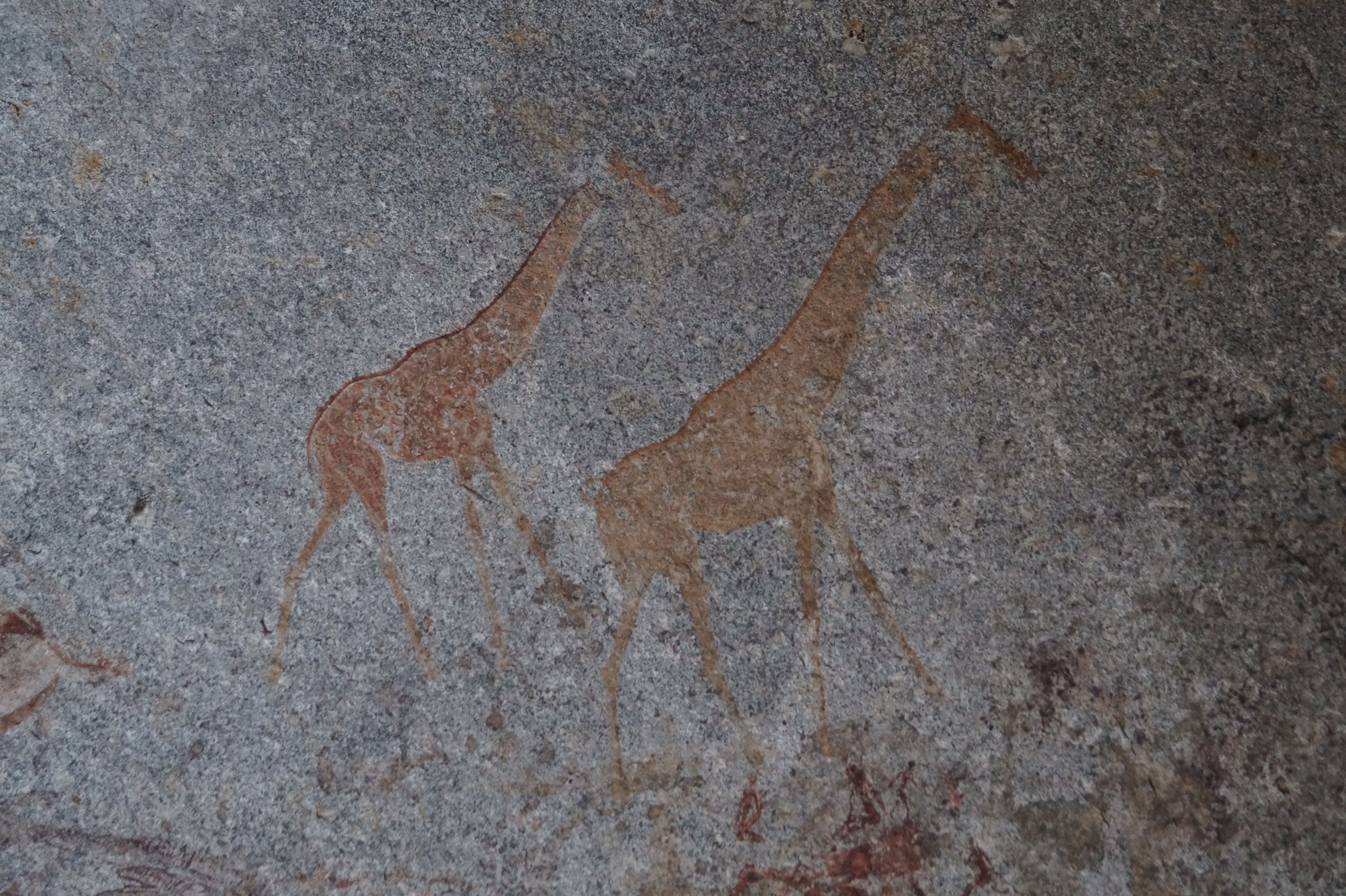Wanting a change from the warm plains of Zimbabwe, we headed up into the mountains bordering Mozambique. Our guide book promised it would "look more like Scotland than Africa". There were extensive fir and eucalyptus plantations; rocky outcrops; waterfalls; and a type of tree that showed the whole autumnal spectrum of colours in its spring foliage (I must find out what it's called).
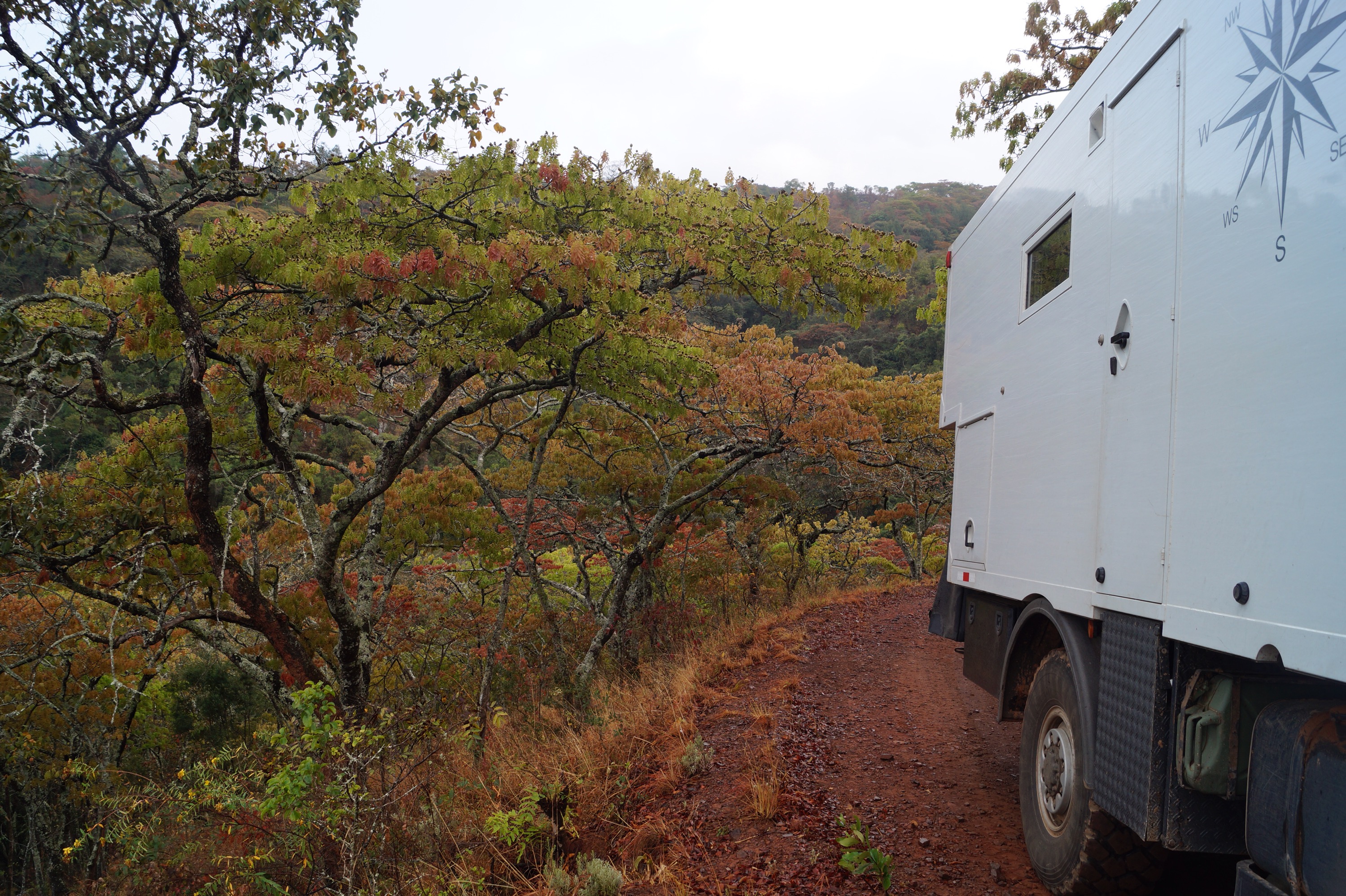
We spent a couple of nights camping at Nyanga National Park campsite, in a pine forest. I felt very at home, as it looked just like the fir plantations surrounding the small town I grew up in, in Southern England - apart from the waterbuck.
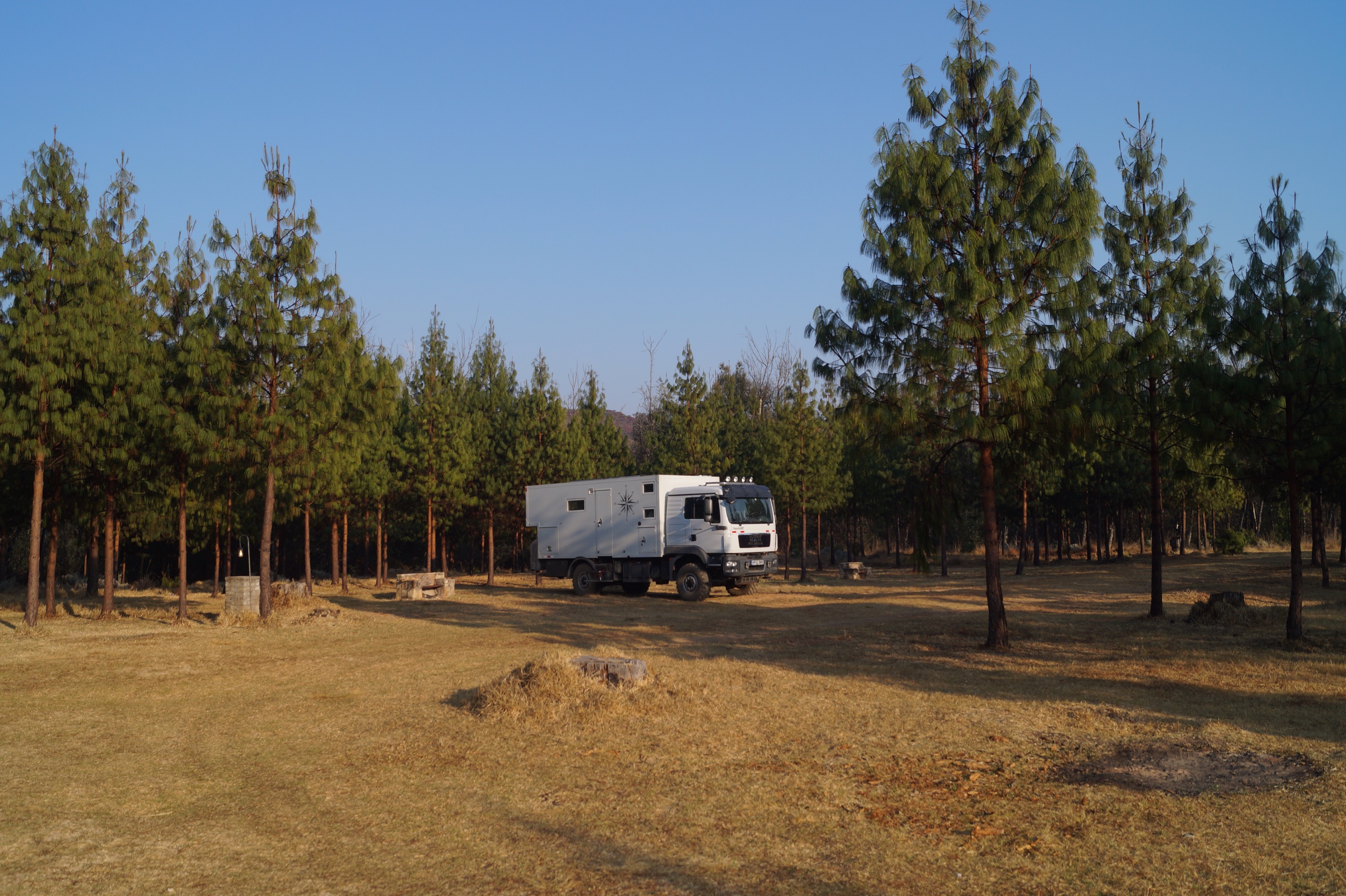
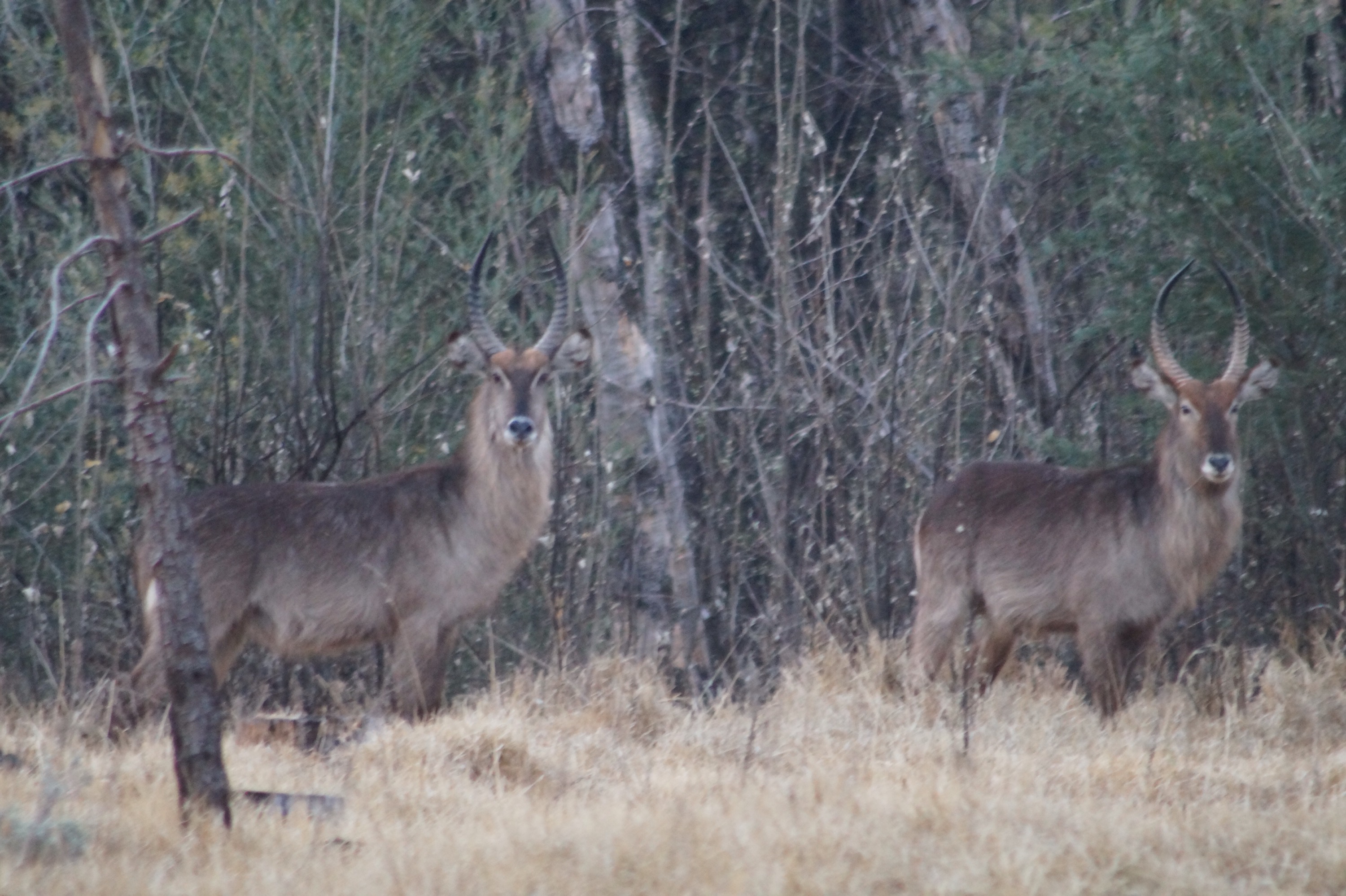
Many of the facilities in Zimbabwe's National Parks are very run down, usually the hardworking park staff keep then scrupulously clean with lots of elbow grease but not much more. The girls and I were delighted to find a bath tub in the block. As we were almost the only campers and the caretaker had stacked the wood burning donkey boiler with enough wood to heat a whole apartment block, we thought we'd take advantage of it. We were rather surprised when we saw the colour of the water, it smelt fresh though, so in we jumped. I'm not sure how clean we actually were afterwards but it felt so good, we had another the following night.

We pootled around going to a waterfall and had a cup of tea at Troutbeck, a famous hotel in the area, so we could have a nose around. Unfortunately all of the promised views into the plains and Mozambique were completely obscured by a smoky haze as they were burning the wood stumps in the tree plantations.

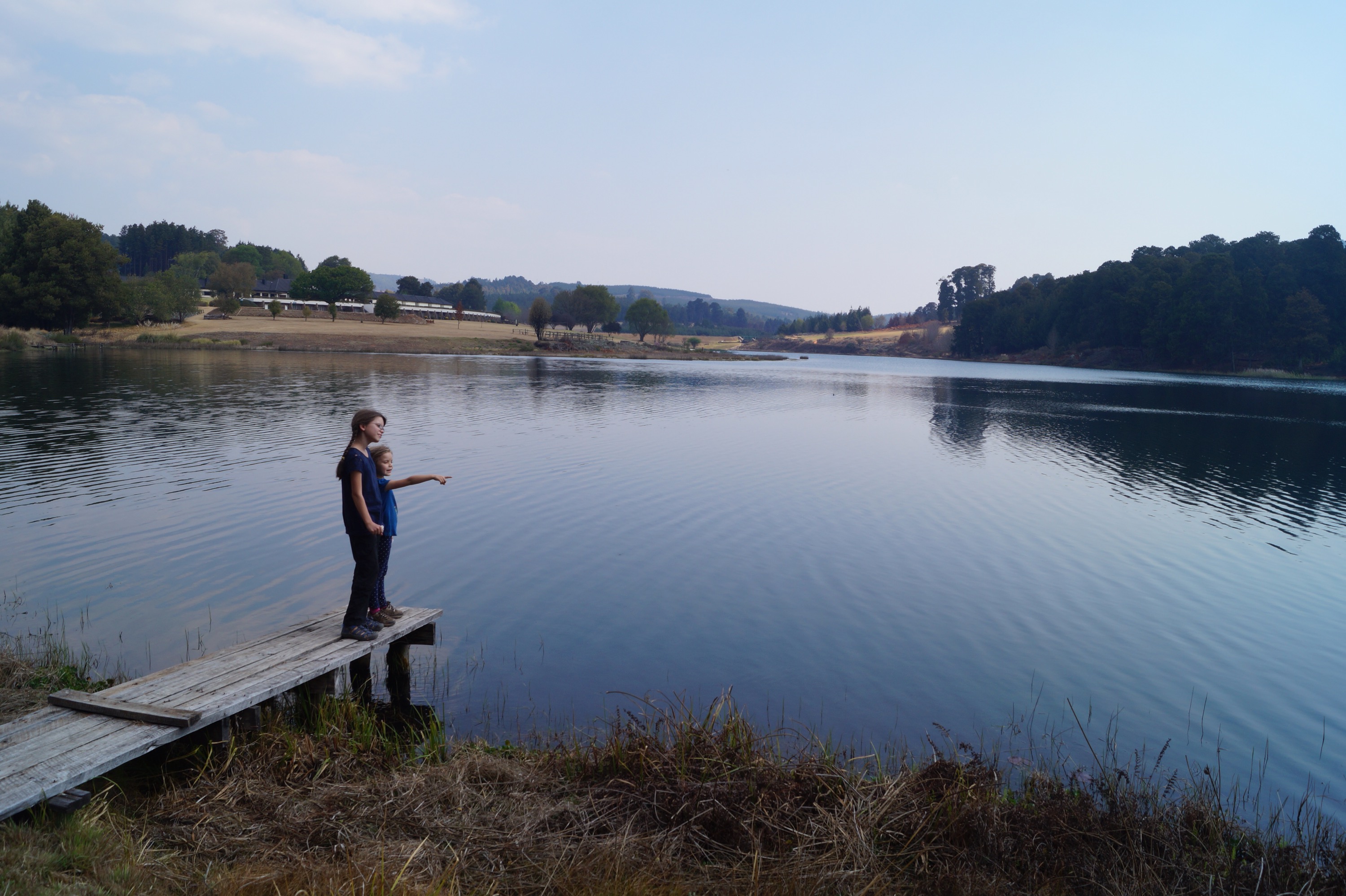
From there we headed south to the Bvumba Mountains, it was still pretty hazy but we got some glimpses of the surroundings. We caught up with Chris and Jolanda, the Swiss motorcyclists we met in Namibia, in the pretty little Ndundu campsite. It was lovely to see them again and catch up with their travels. We decided against a visit to the nearby Botanical Gardens and instead to all go for a walk along the back roads. After a game of cricket in the afternoon; John, the friendly campsite manager, took us up to visit Leopard Rock "Castle". Built in the 1940's for a couple by Italian POW's, it was a rather bizarre structure. Now much run down, it is opened every afternoon by the staff of the nearby smart hotel for tours and sundowners. The Queen Mother and various royals had visited in the past. Inside it was really a very unattractive design with some small poky rooms; even a windowless turret alcove so servants could wait out of sight in the dining room. The "throne" toilet built out of the rock face got us all laughing though. However the views were sublime, even through the haze.

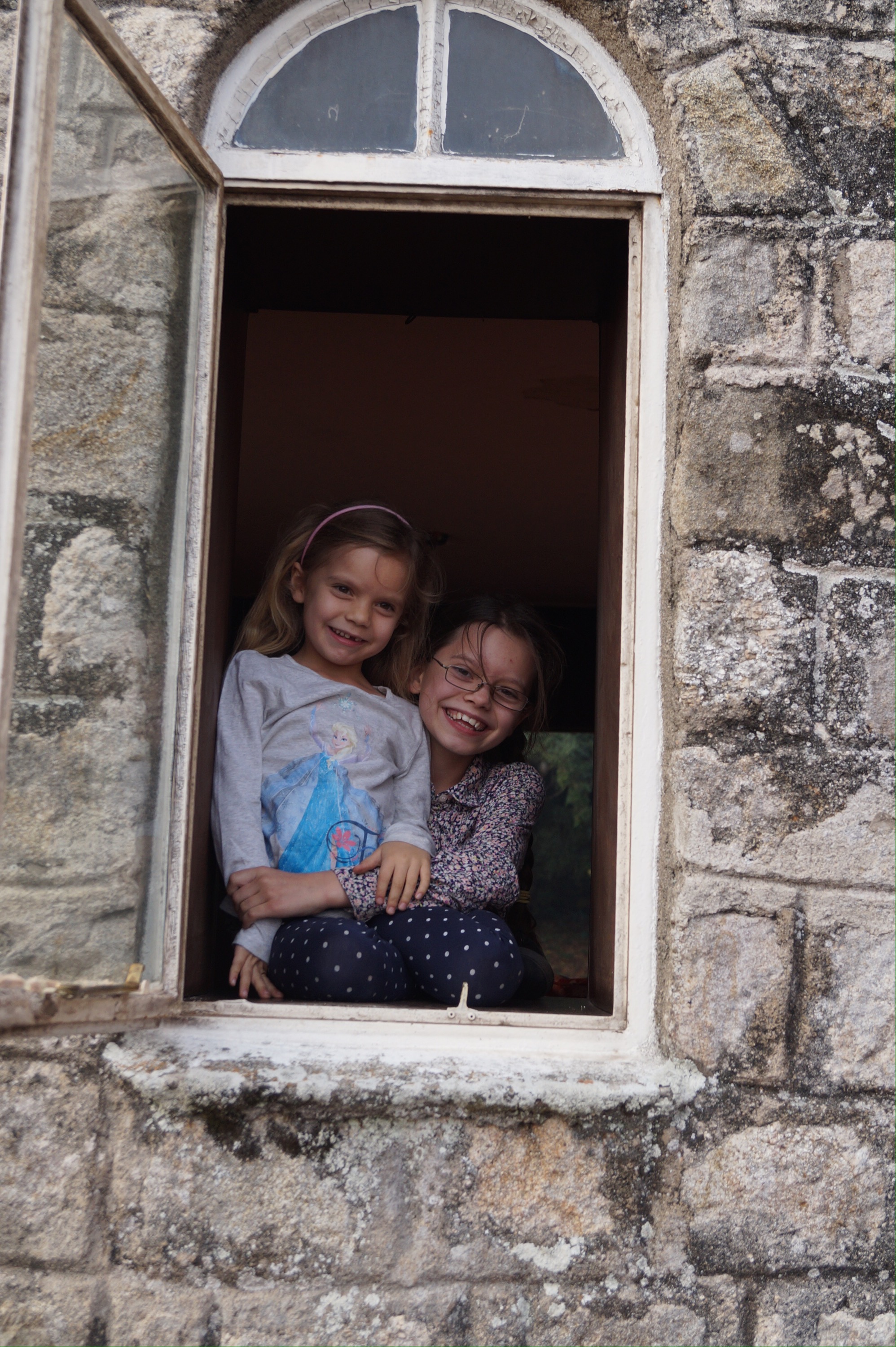
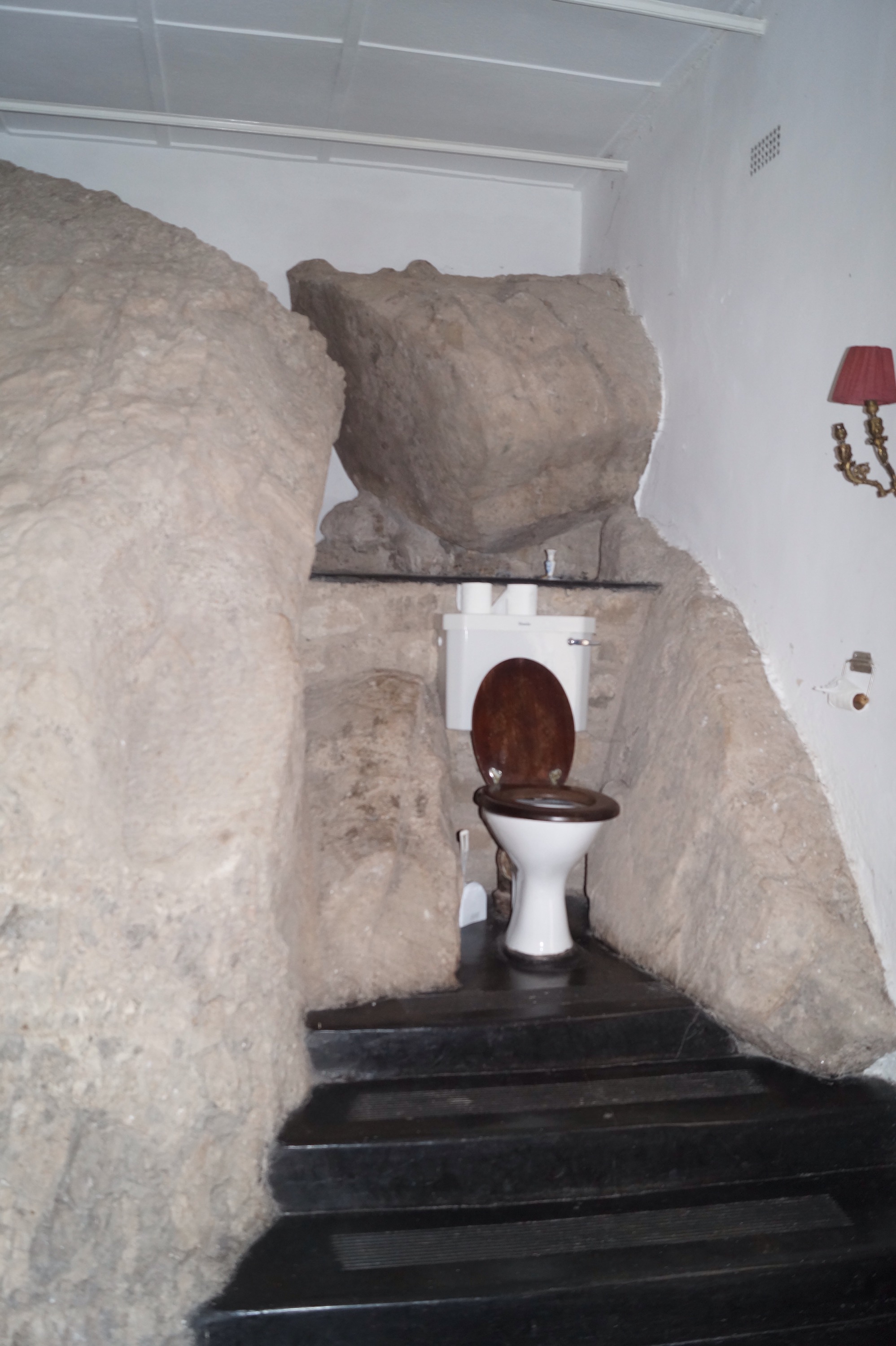

That night over a shared barbecue dinner the mists drew in. When it started to rain (our first rain since the flood in South Africa) as we got in bed, we quickly got up to do a bodge job to keep the water out of the gash in the truck's side......
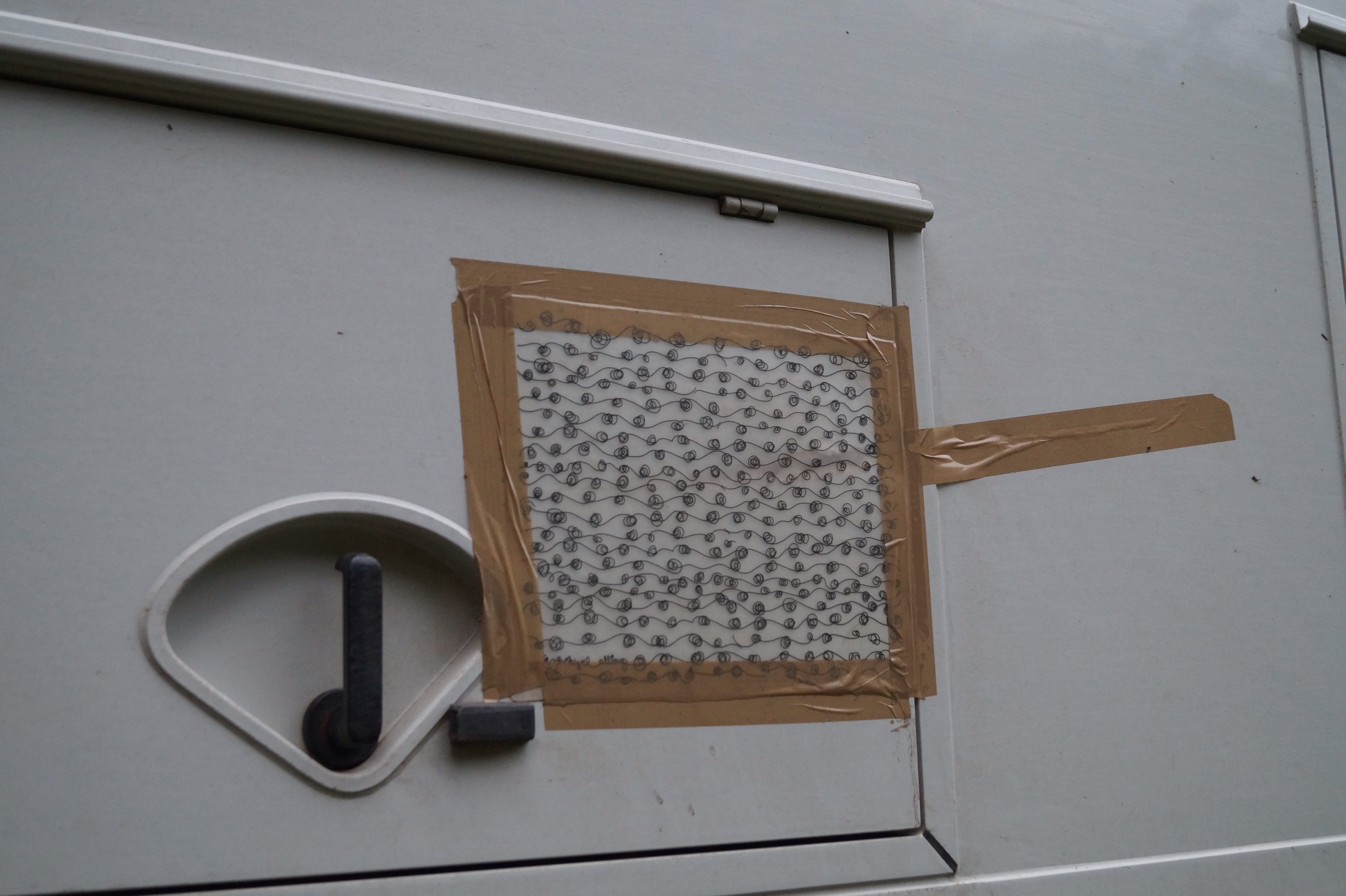
Yep, that's exactly what it looks like: an IKEA table mat parcel-taped to the side of the truck. It will have to do until we can get some fibreglass to mend it.
On our way down through the rain and mists the following morning, we made a stop at "Tony's coffee shop", something of an institution we understand in the country. We had been recommended it by at least 3 sets of people when they heard we were heading that way. Two of the insanely rich cakes, filled the 4 of us very happily. It was all beautifully done with the best china.
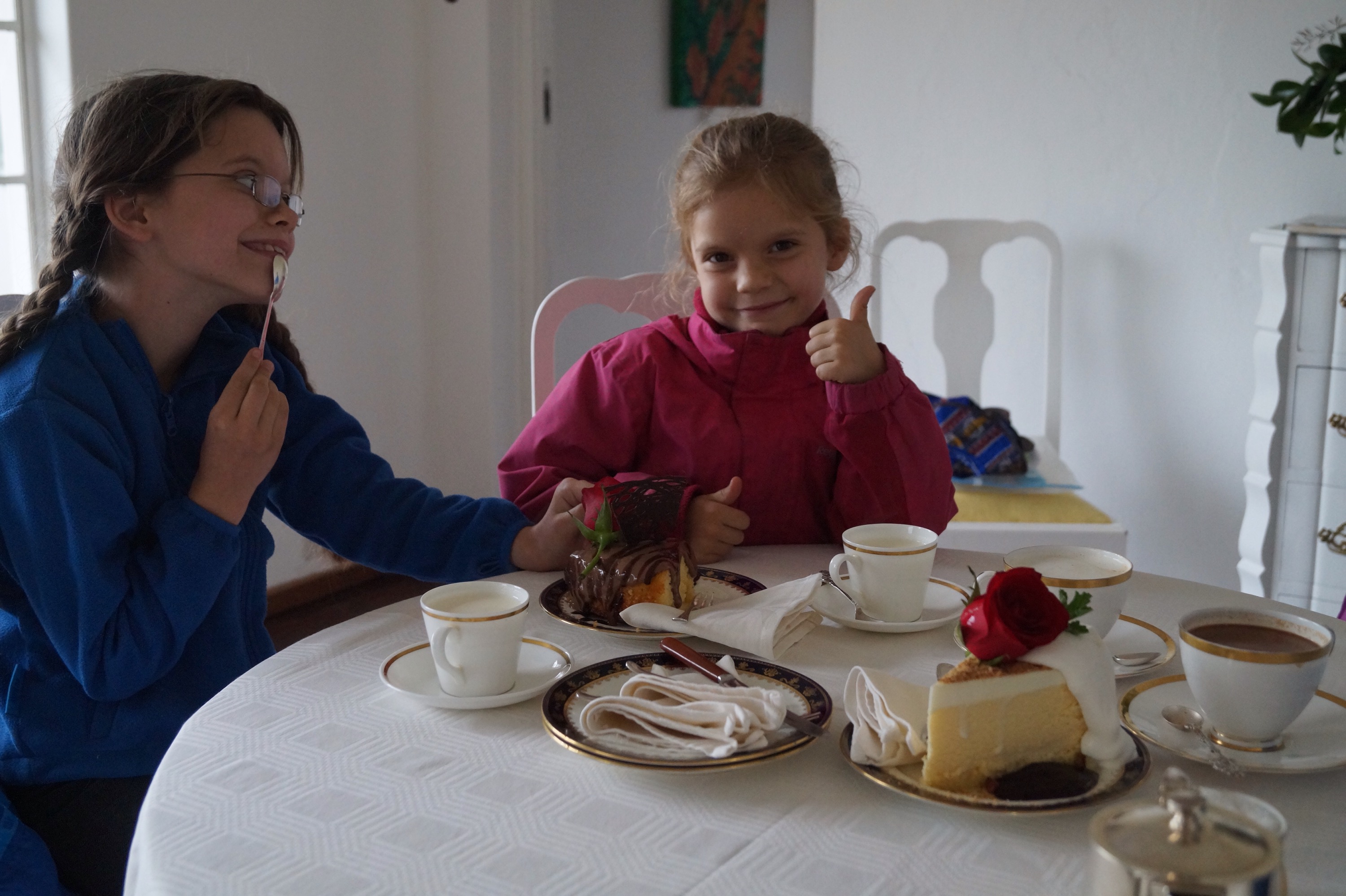
Chimanimani National Park was our next stop, where we camped next to the pretty Bridal Veil Falls. It felt pretty isolated and alone in the narrow valley as the mists drew in for the night.
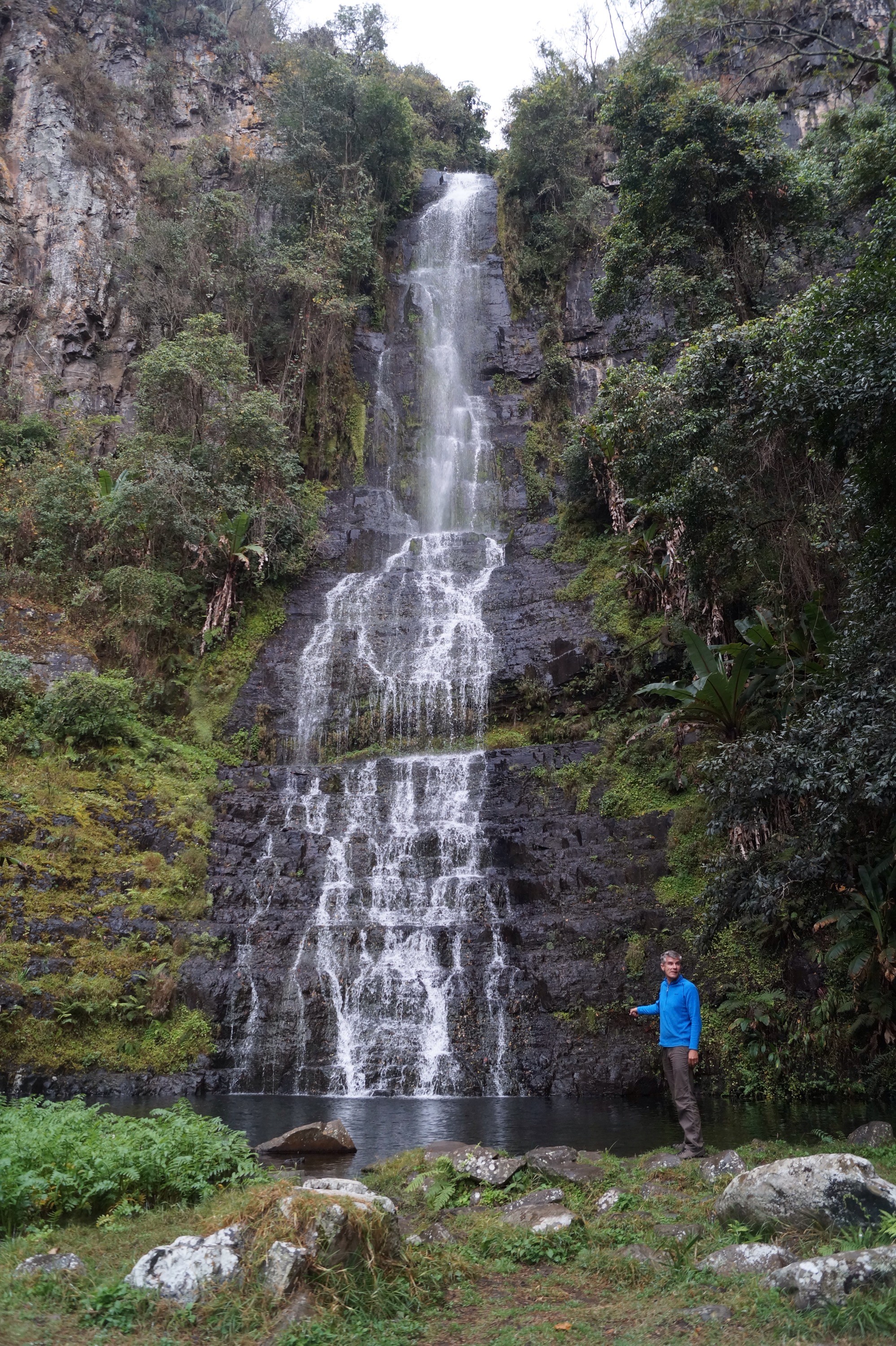

Another area of the park about 20km away was supposed to be good for hiking. We didn't have high expectations as we parked up in the mist and drizzle but as we climbed higher it dried out and started to clear up. After a few of hours of hiking up through rocky ridges; we could see all the way into Mozambique. It was beautiful and felt so good to be walking again. We haven't hiked in Africa as much as we did in South America, mostly as when we've been out in the wilds we have been in game parks. The National Park's campsite at the start of the hiking area was pretty, under those lovely trees again, and staffed by a very friendly couple. They get very few visitors, which is a shame as the hiking is excellent, but still keep the very ageing facilities spotless. We awoke, after a snug night in the truck, to thick mist and bumped our way back down to the town with the warden's sister and three nephews all squeezed in the cab.
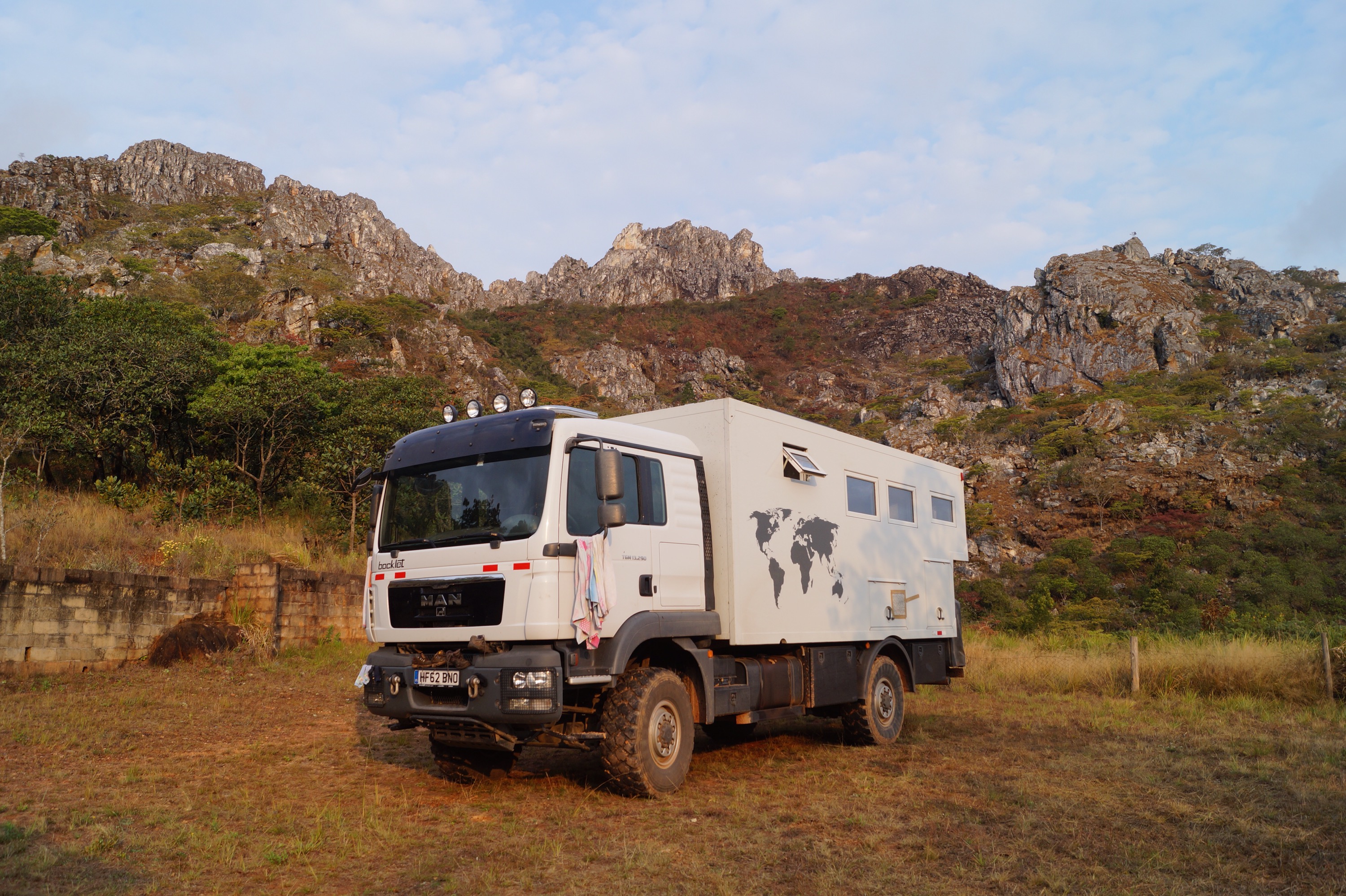
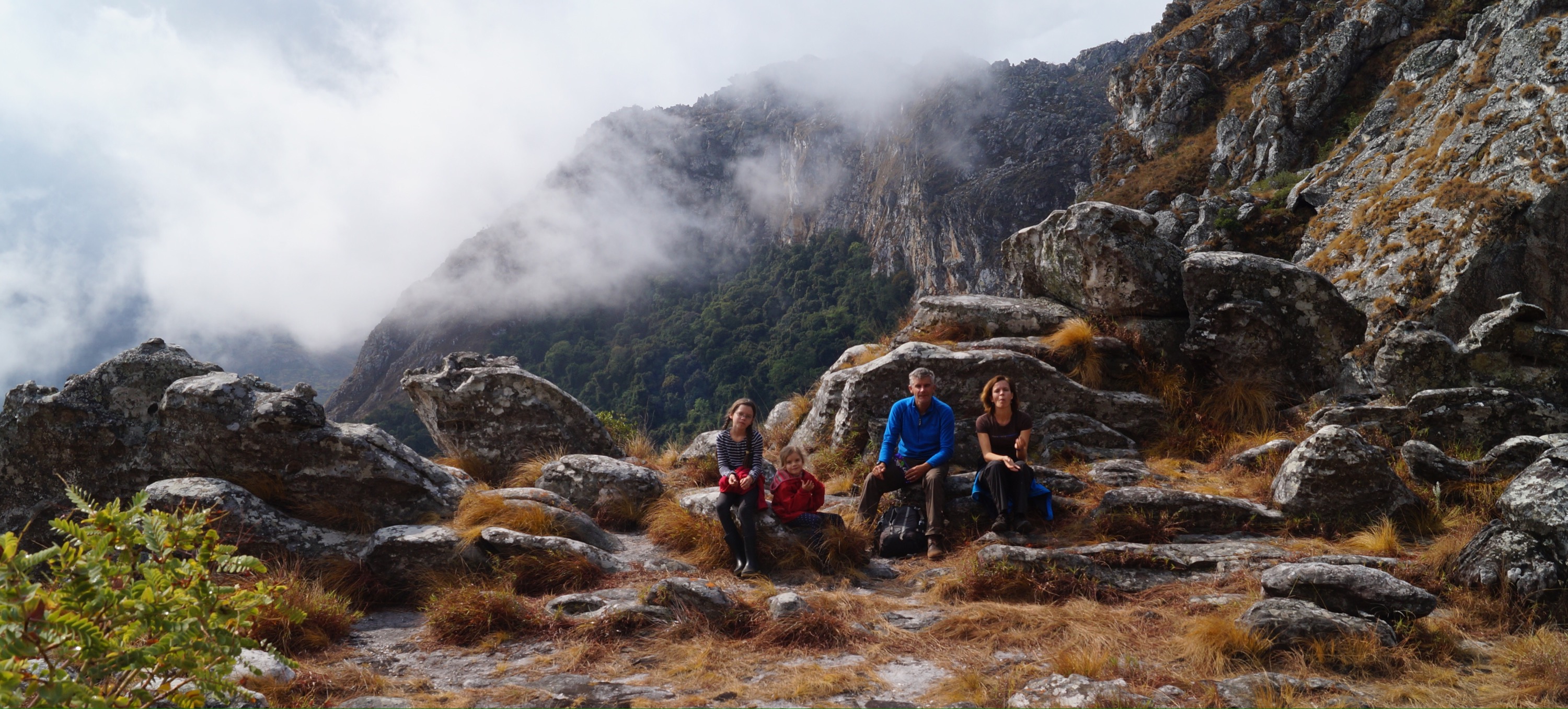

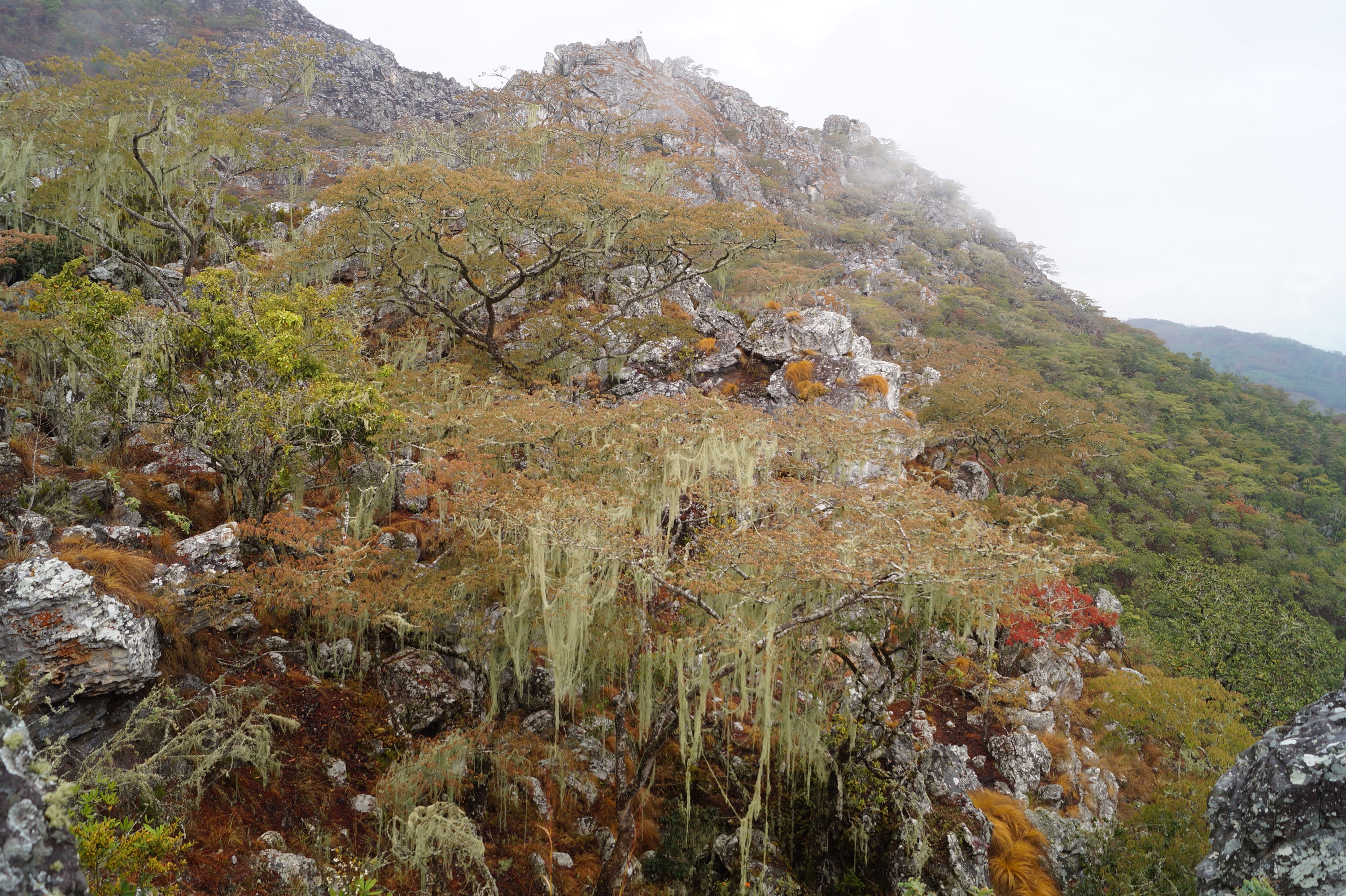
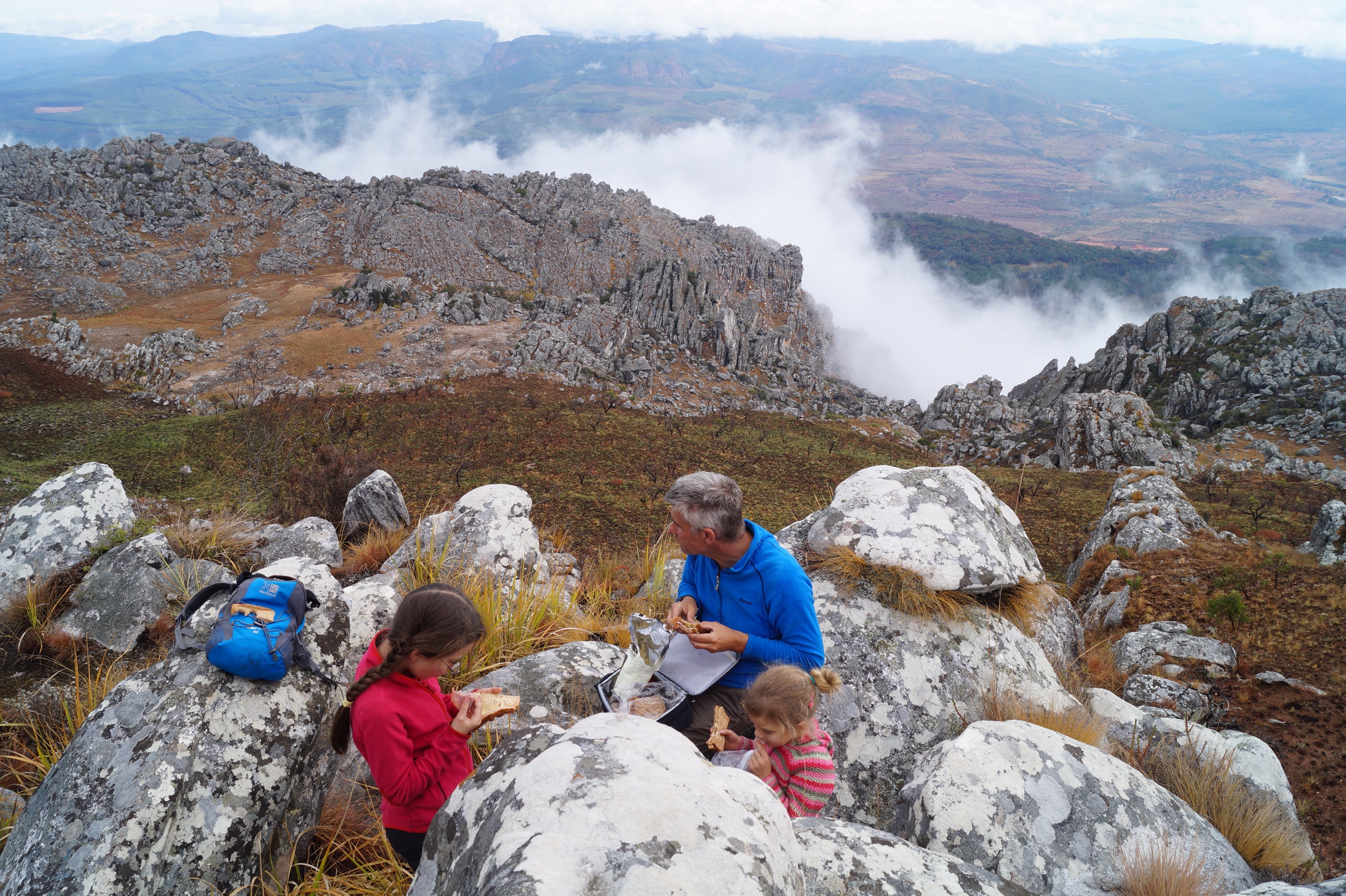
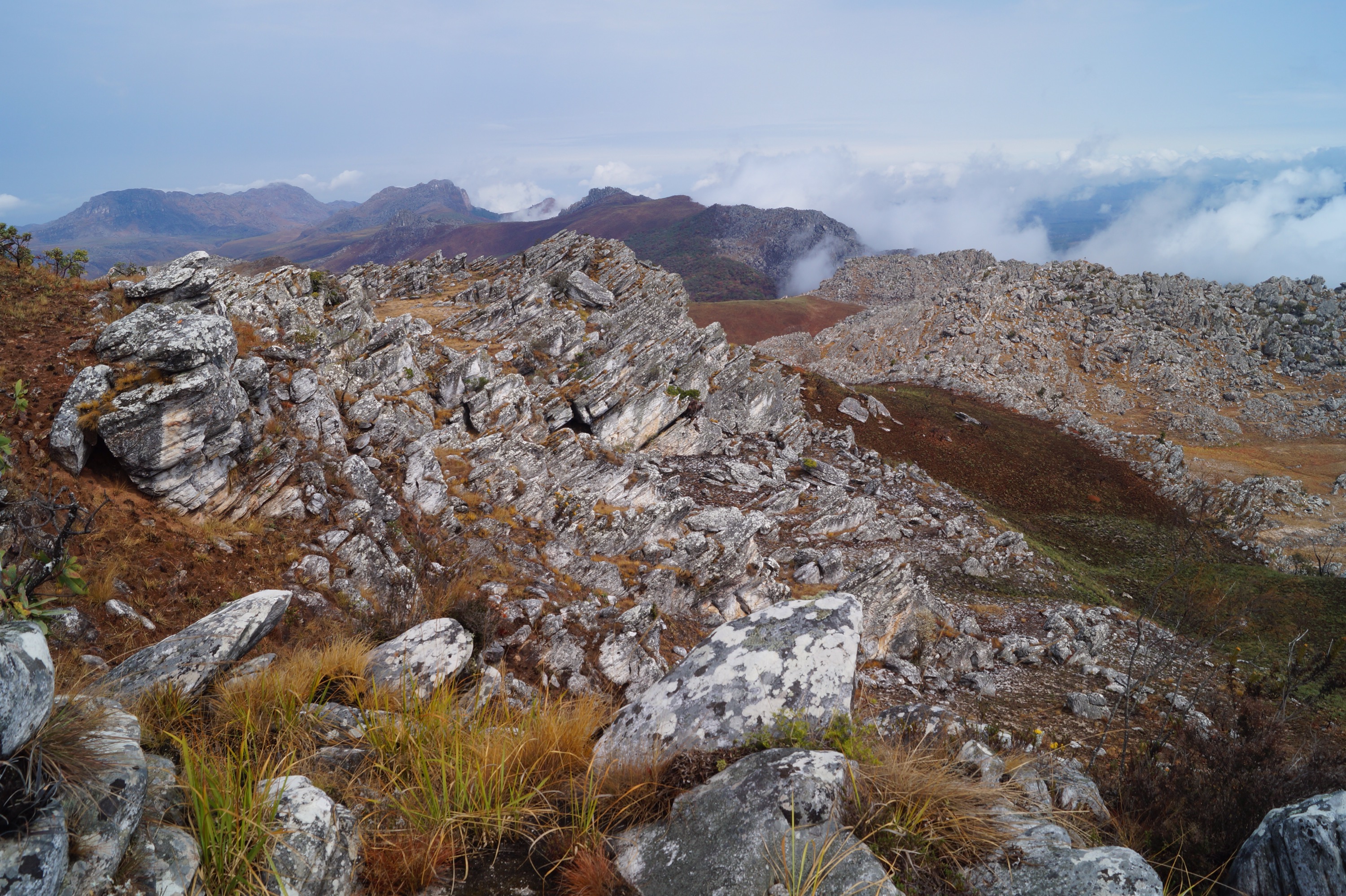
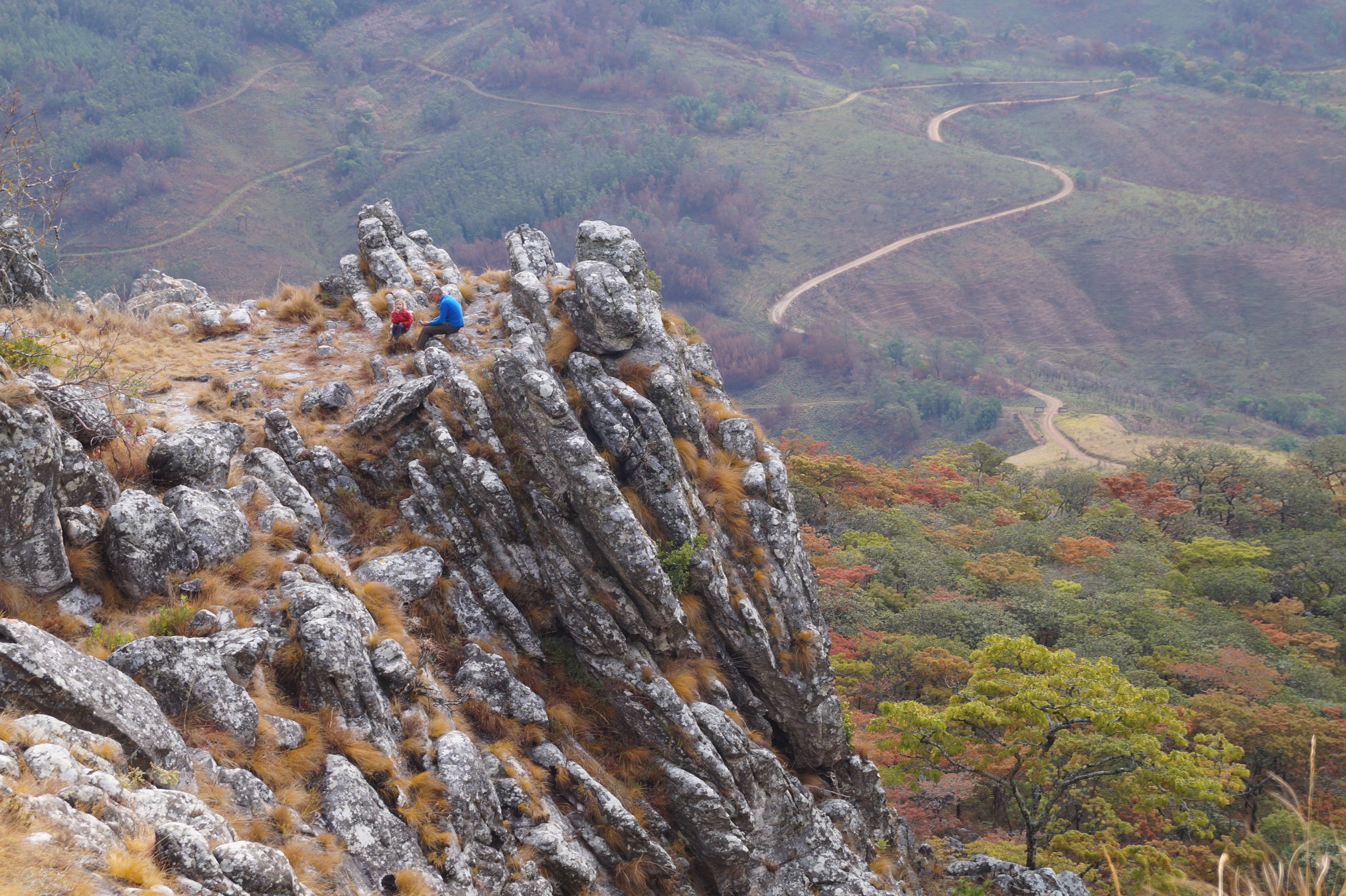
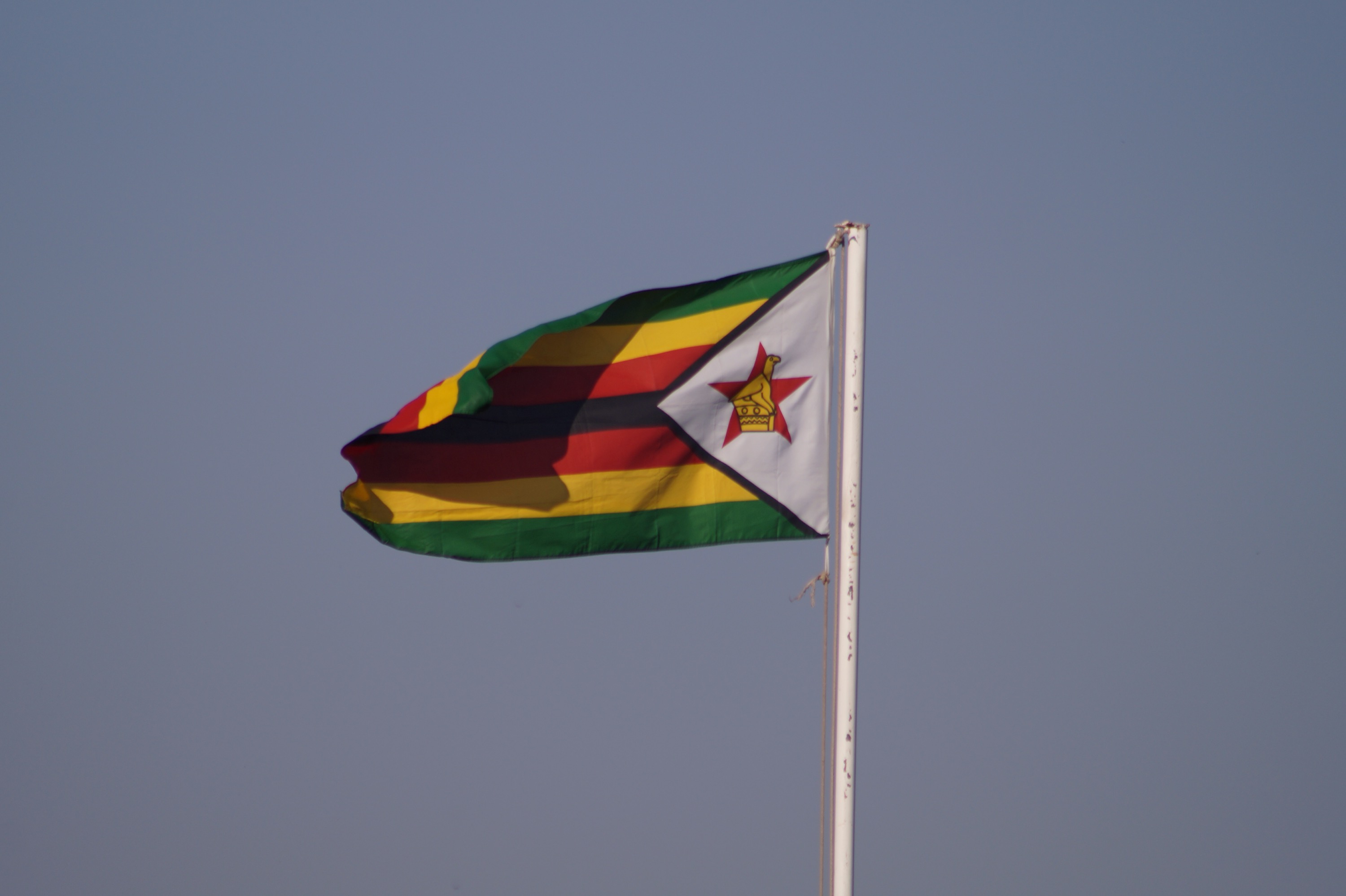 Lucy
We had high tea at Victoria Falls Hotel. The waterfall was named after Queen Victoria by a man called Dr. Livingstone who found it when looking for a route along the river. We went to see the falls and got quite wet.
We went for a walk at Great Zimbabwe. They found 7 stone birds there, all representing a king. Strangely they had a tower that wasn't hollow but solid, no one knows why. When the first Europeans came they tried to take it down to find treasure in it but they didn't find any.
My favourite bit in Zimbabwe was meeting the twins in Bulawayo. Sometimes I mixed up their names because they were identical but they weren't cross with me. They were very friendly and had lots of toys. I missed them very much when we left their house. They had a dog called Ollie who was also very friendly.
Lucy
We had high tea at Victoria Falls Hotel. The waterfall was named after Queen Victoria by a man called Dr. Livingstone who found it when looking for a route along the river. We went to see the falls and got quite wet.
We went for a walk at Great Zimbabwe. They found 7 stone birds there, all representing a king. Strangely they had a tower that wasn't hollow but solid, no one knows why. When the first Europeans came they tried to take it down to find treasure in it but they didn't find any.
My favourite bit in Zimbabwe was meeting the twins in Bulawayo. Sometimes I mixed up their names because they were identical but they weren't cross with me. They were very friendly and had lots of toys. I missed them very much when we left their house. They had a dog called Ollie who was also very friendly.
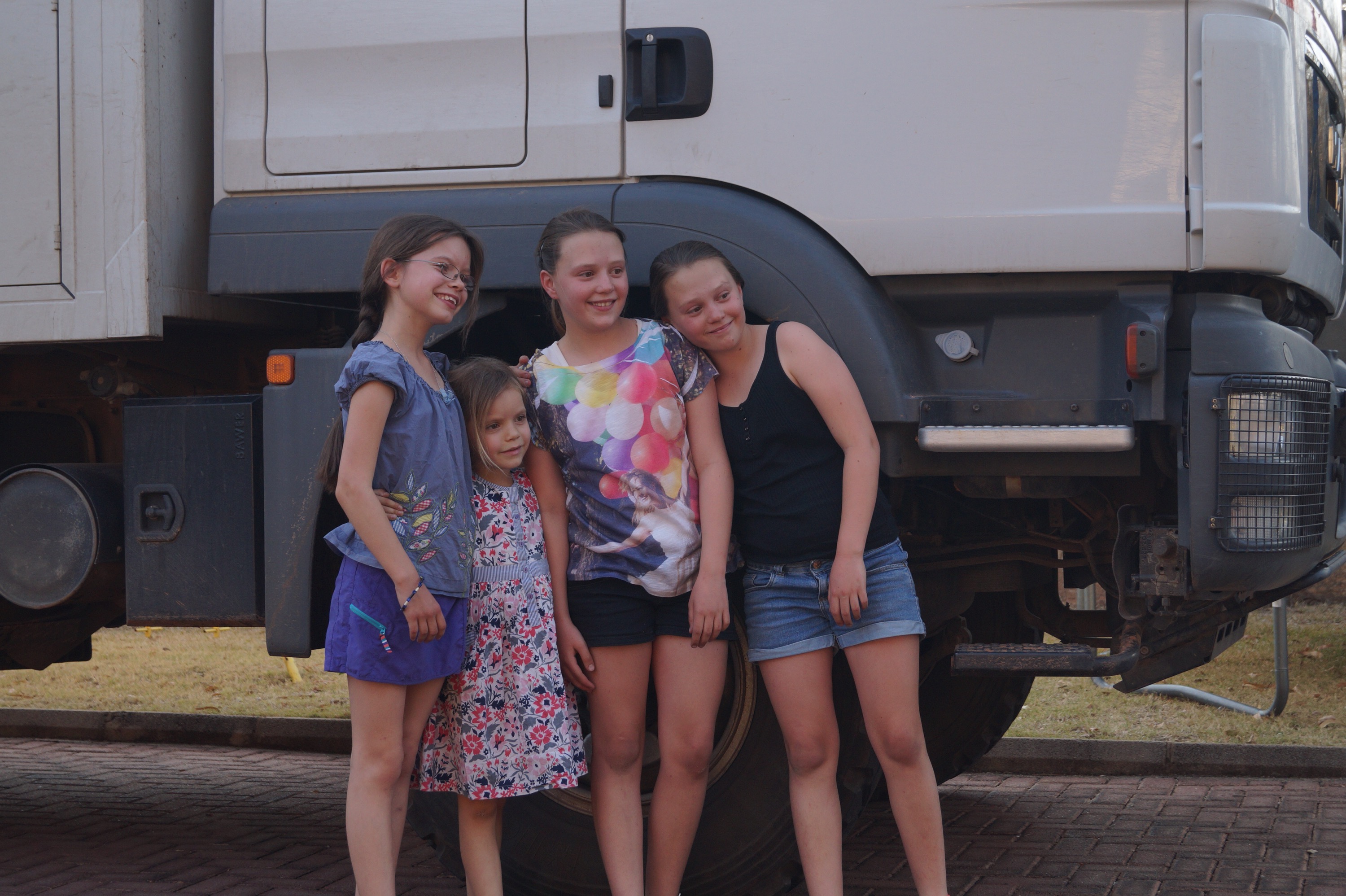 Alisha
In Hwange we saw a pride of 16 lions. They have 4 tiny cubs. They looked so sweet that I wanted to give them a cuddle. We went and stayed at a waterhole and as it was getting dark a whole herd of elephants came down, then lots and lots more came down. You couldn't hear them coming even though they were about the size of the truck. They were running because they were so thirsty. We sat on the roof and watched them. I like baby elephants, I think they are really sweet. From one of the hides we saw some tiny, tiny elephants. I don't think they would have reached the top of one of the truck's tyres.
Visiting Great Zimbawe was very interesting. We climbed the ruins of the Ritual or Royal Enclosure, there was a lovely view of the top. There was a big rock where the king would have sat, we sat there too but not on a throne.
Then we went to Bulawayo and met up with some friends we had met at a hide in Hwange and their children. They were 10 year old twin girls, we got on really well and had lots of fun. They were very nice to us and it was great to make friends.
Alisha
In Hwange we saw a pride of 16 lions. They have 4 tiny cubs. They looked so sweet that I wanted to give them a cuddle. We went and stayed at a waterhole and as it was getting dark a whole herd of elephants came down, then lots and lots more came down. You couldn't hear them coming even though they were about the size of the truck. They were running because they were so thirsty. We sat on the roof and watched them. I like baby elephants, I think they are really sweet. From one of the hides we saw some tiny, tiny elephants. I don't think they would have reached the top of one of the truck's tyres.
Visiting Great Zimbawe was very interesting. We climbed the ruins of the Ritual or Royal Enclosure, there was a lovely view of the top. There was a big rock where the king would have sat, we sat there too but not on a throne.
Then we went to Bulawayo and met up with some friends we had met at a hide in Hwange and their children. They were 10 year old twin girls, we got on really well and had lots of fun. They were very nice to us and it was great to make friends.
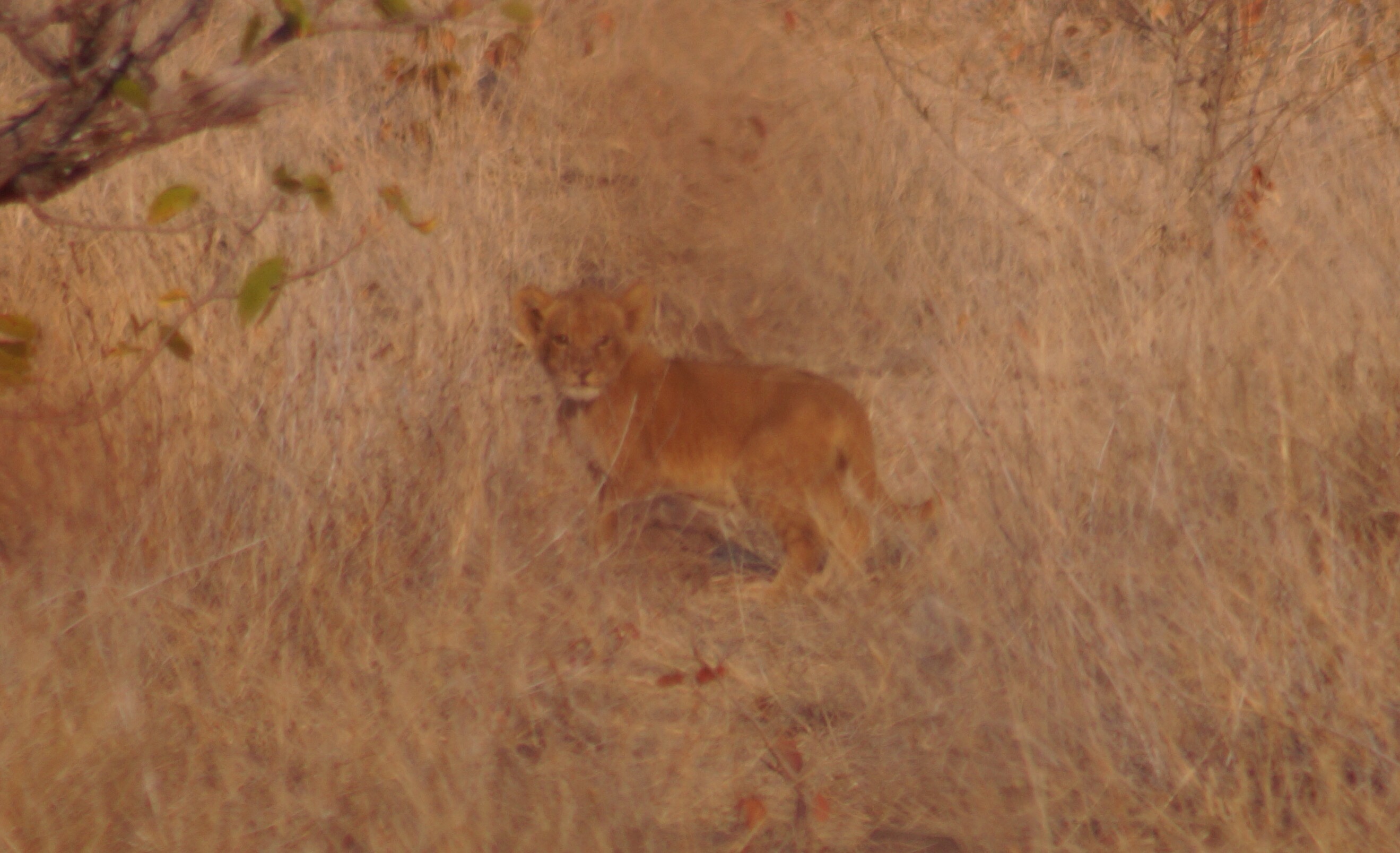 Gilly
Writing my reflections about Zimbabwe is probably one of the hardest countries to do. We've had a fantastic time here and as someone said to us: "One of Zimbabwe's greatest assets is its people." We've certainly found that to be true with the friendly people we've met. They are very hardworking, often with few resources, we particularly noticed this in the national parks.
The variety of things to see and do is impressive: from Victoria Falls; wildlife in Hwange; hiking in the Eastern Highlands; and amazing scenery in Matopos and Chizarira National Parks. What is really sad is that even with these amazing natural wonders and great people that there are virtually no tourists in the country.
However positive our experience has been, when visiting a country like this you can not ignore its recent history and current political position. Back in 2009 I remember watching the news showing the country in economic collapse with shop shelves empty; the Zimbabwe dollar in ever spiraling inflation (bank notes were issued in amounts of 100 trillion dollars); and the ensuing suffering of the population. At that time if you wanted to write a manifesto on how ruin a country in a short time period, you should have looked no further than Zimbabwe for your model. Things have definitely moved on from those days and it feels like a country on the "up" due to its hardworking and determined population. Unfortunately President Mugabe is still in charge and we heard tales of massive corruption and profiteering by individuals in his government.
As visitors, apart from a couple of traffic police officers, we felt welcomed by everyone and safe throughout the country. Hopefully political change will soon be coming to take the country forward.
Finally I now know the beautiful trees are called Msasa Trees. Thanks everyone.
Gilly
Writing my reflections about Zimbabwe is probably one of the hardest countries to do. We've had a fantastic time here and as someone said to us: "One of Zimbabwe's greatest assets is its people." We've certainly found that to be true with the friendly people we've met. They are very hardworking, often with few resources, we particularly noticed this in the national parks.
The variety of things to see and do is impressive: from Victoria Falls; wildlife in Hwange; hiking in the Eastern Highlands; and amazing scenery in Matopos and Chizarira National Parks. What is really sad is that even with these amazing natural wonders and great people that there are virtually no tourists in the country.
However positive our experience has been, when visiting a country like this you can not ignore its recent history and current political position. Back in 2009 I remember watching the news showing the country in economic collapse with shop shelves empty; the Zimbabwe dollar in ever spiraling inflation (bank notes were issued in amounts of 100 trillion dollars); and the ensuing suffering of the population. At that time if you wanted to write a manifesto on how ruin a country in a short time period, you should have looked no further than Zimbabwe for your model. Things have definitely moved on from those days and it feels like a country on the "up" due to its hardworking and determined population. Unfortunately President Mugabe is still in charge and we heard tales of massive corruption and profiteering by individuals in his government.
As visitors, apart from a couple of traffic police officers, we felt welcomed by everyone and safe throughout the country. Hopefully political change will soon be coming to take the country forward.
Finally I now know the beautiful trees are called Msasa Trees. Thanks everyone.
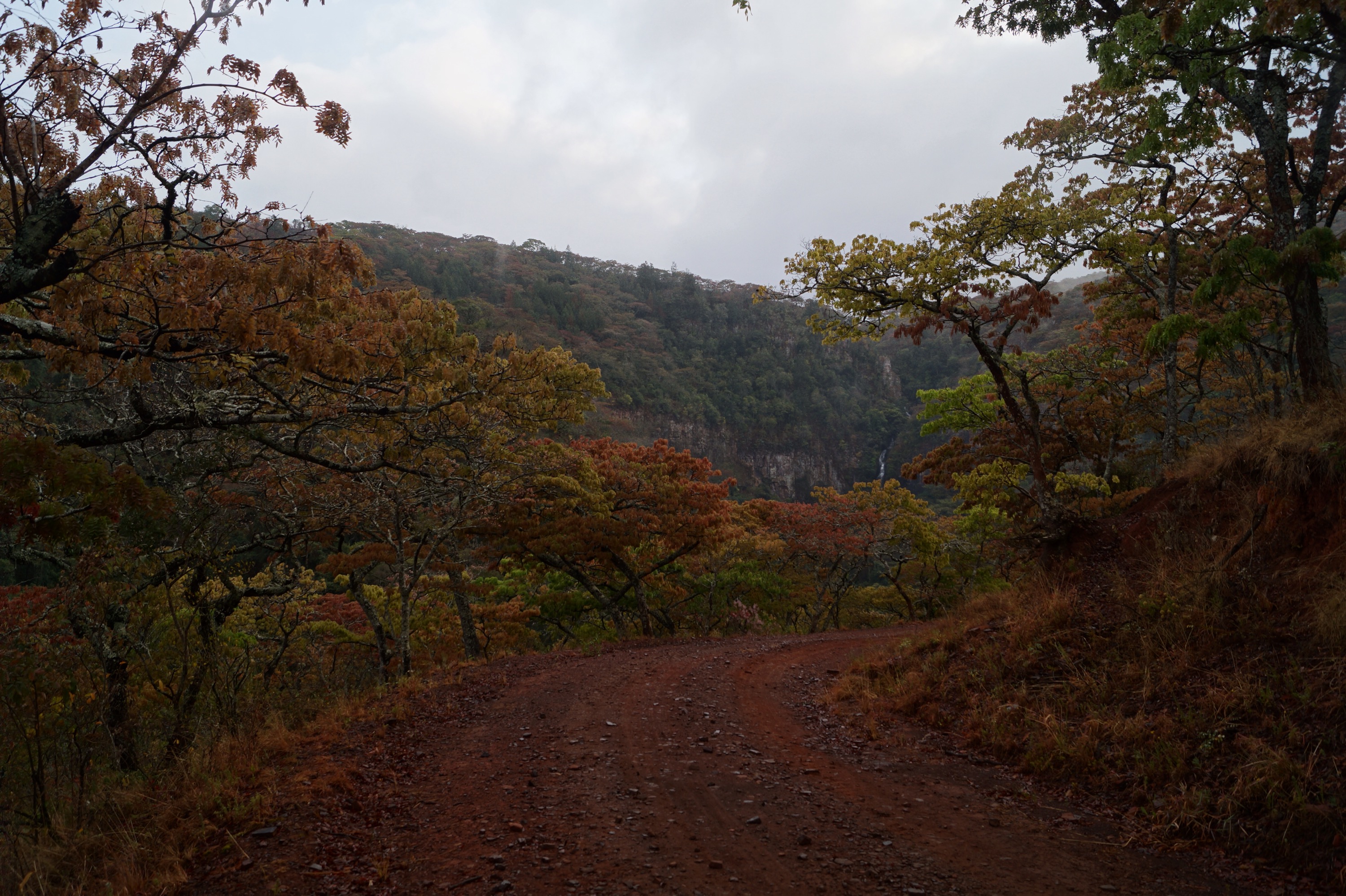 Steve
Zimbabwe is a diverse country with lots to see and do. Like some of the other countries we have visited in Africa it has amazing wildlife. The night we spent camping at the Guvalala platform with the elephants and lions was really special. But the country also has much more. The scenery is spectacular from the escapement at Chizarira in the North through to the mountains in Chimanimani in the East to the amazing rock kopjes in Motobos near Bulawayo.
With everything to see it's important not to miss one of the wonderful aspects of the country which is its people. From all walks of life we met people who were friendly and kind. In a country with such a difficult past this was amazing and heart warming.
Apart from at Victoria Falls we saw very few foreign tourists. Why is this with such nice people and all that there is to see? The biggest reason is undoubtably the press coverage of all the issues in Zimbabwe. The government is corrupt and could not have done a much worse job in running the country. With all the problems this means that the infrastructure has been neglected and lots of places then seem expensive and in poor shape.
The government manifests itself in places such as through the police. There were roadblocks everywhere and that does not make for stress free driving. Probably our impression was coloured by having a bad experience at one of our first roadblocks because after that to be honest all were polite and generally friendly and more often than not we were just waved through. And in the end we never even paid a dollar in "fines".
It has to be hoped that things will change and that people can once again enjoy all the wonderful things the country has to offer. The people of the country certainly deserve this and I am sure have the skills and enthusiasm to make it a success again.
Steve
Zimbabwe is a diverse country with lots to see and do. Like some of the other countries we have visited in Africa it has amazing wildlife. The night we spent camping at the Guvalala platform with the elephants and lions was really special. But the country also has much more. The scenery is spectacular from the escapement at Chizarira in the North through to the mountains in Chimanimani in the East to the amazing rock kopjes in Motobos near Bulawayo.
With everything to see it's important not to miss one of the wonderful aspects of the country which is its people. From all walks of life we met people who were friendly and kind. In a country with such a difficult past this was amazing and heart warming.
Apart from at Victoria Falls we saw very few foreign tourists. Why is this with such nice people and all that there is to see? The biggest reason is undoubtably the press coverage of all the issues in Zimbabwe. The government is corrupt and could not have done a much worse job in running the country. With all the problems this means that the infrastructure has been neglected and lots of places then seem expensive and in poor shape.
The government manifests itself in places such as through the police. There were roadblocks everywhere and that does not make for stress free driving. Probably our impression was coloured by having a bad experience at one of our first roadblocks because after that to be honest all were polite and generally friendly and more often than not we were just waved through. And in the end we never even paid a dollar in "fines".
It has to be hoped that things will change and that people can once again enjoy all the wonderful things the country has to offer. The people of the country certainly deserve this and I am sure have the skills and enthusiasm to make it a success again.
